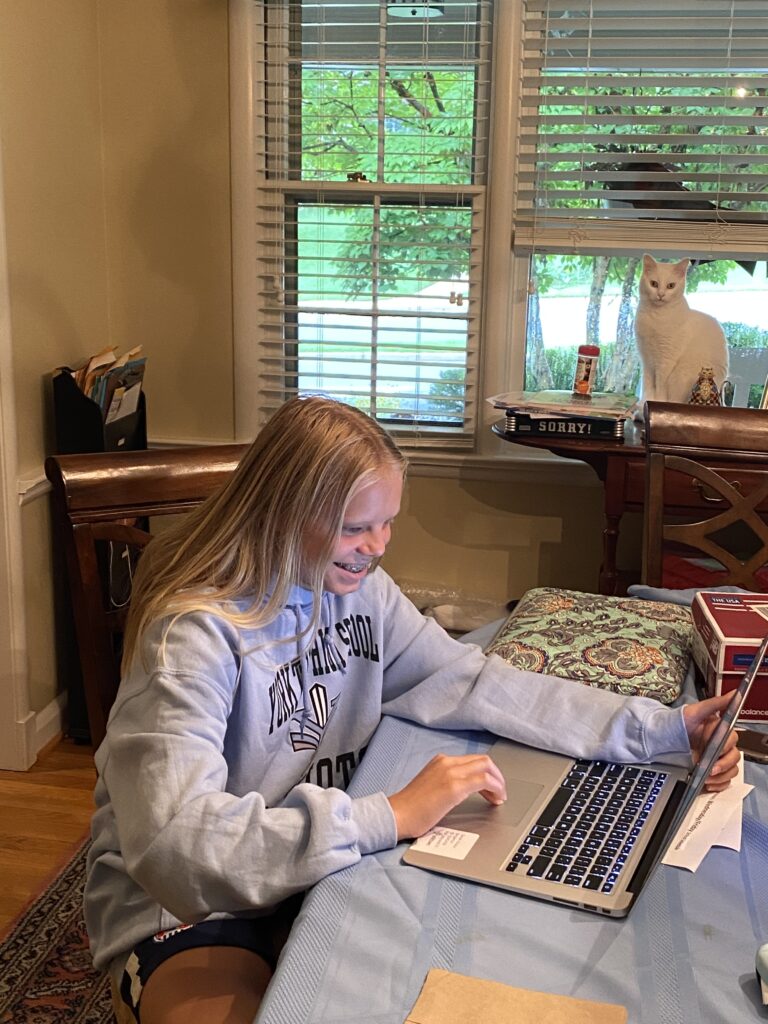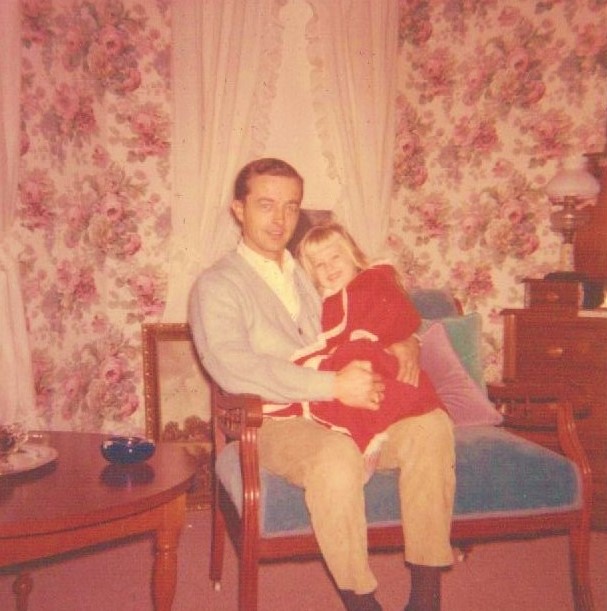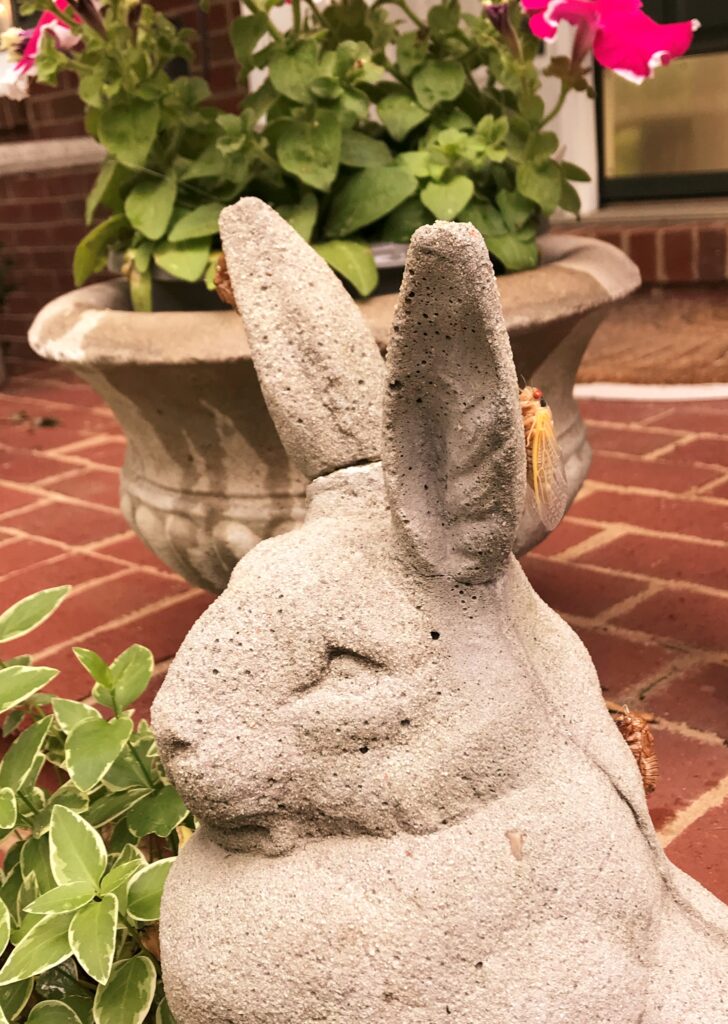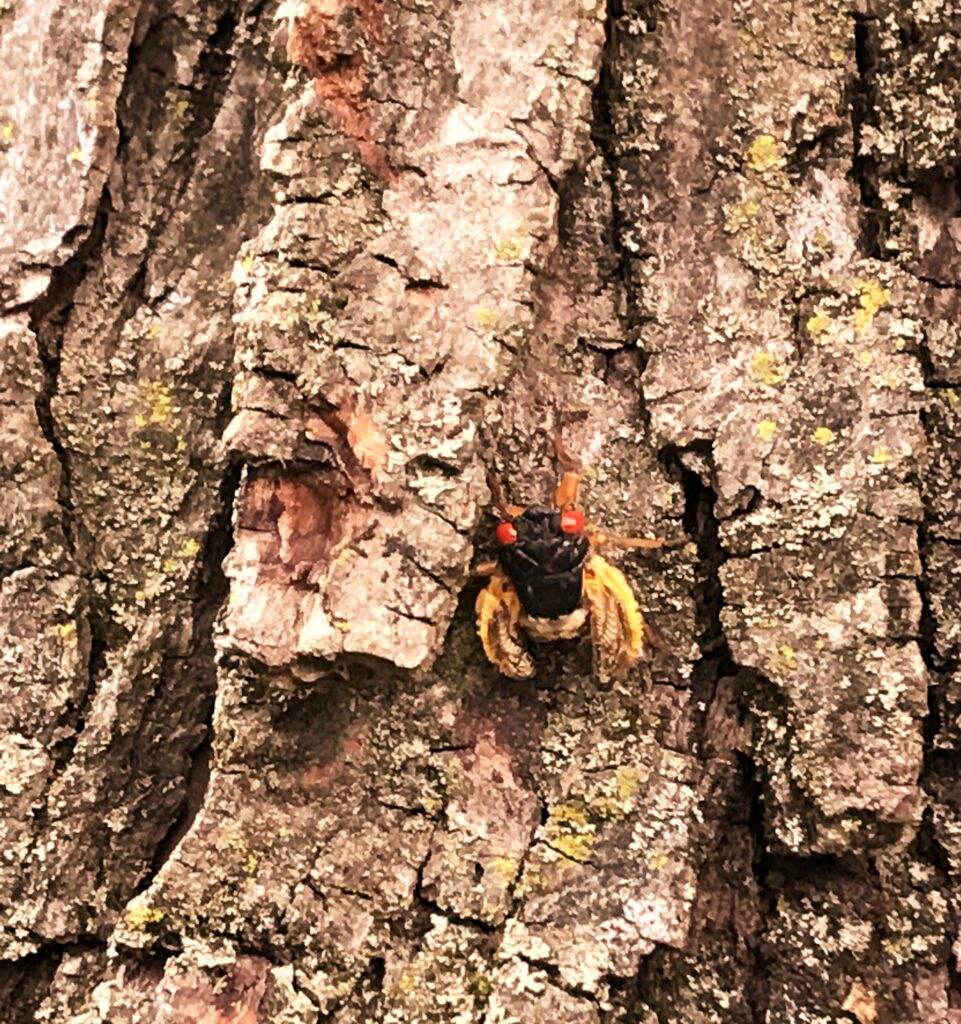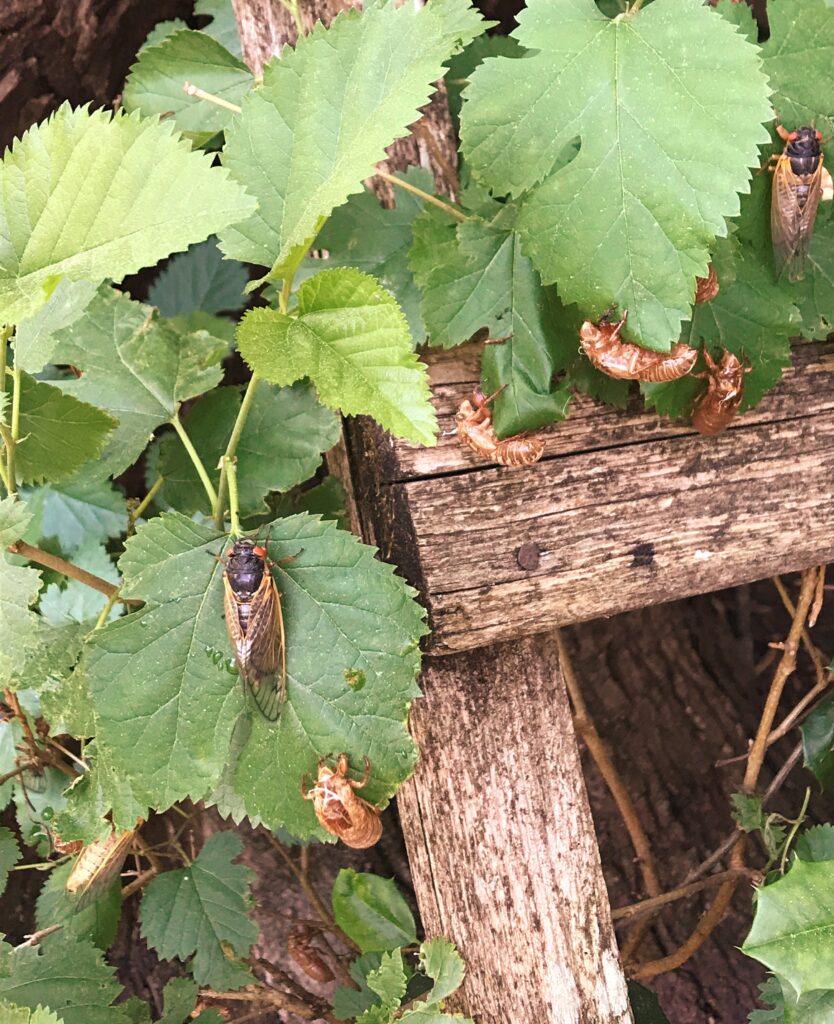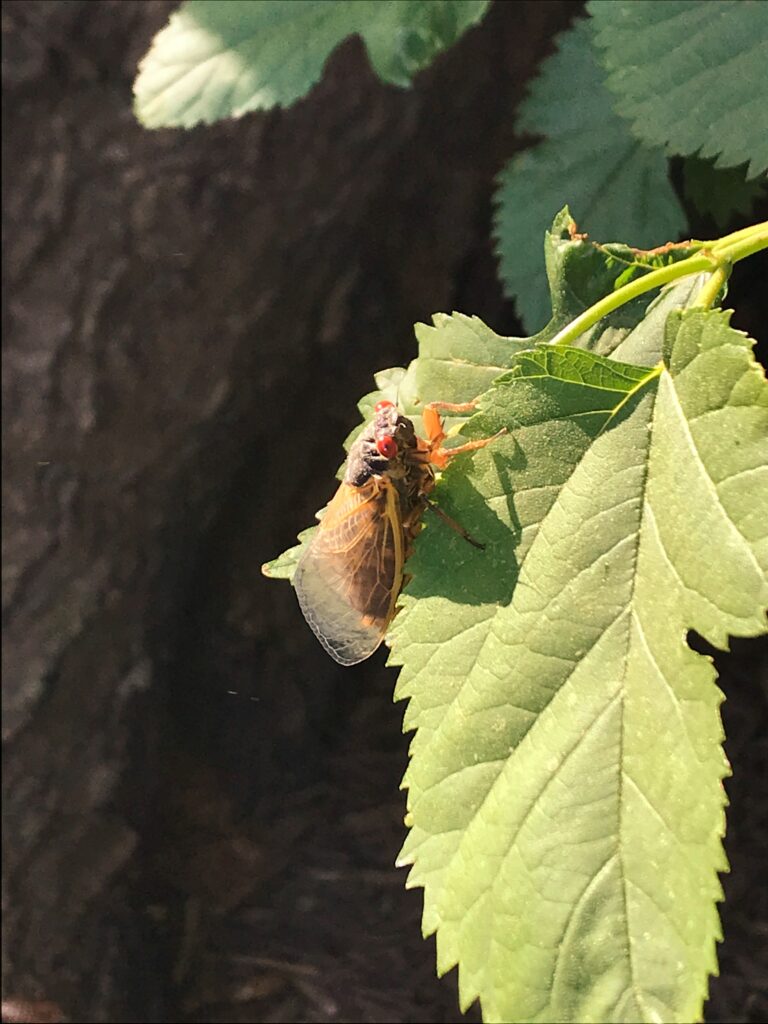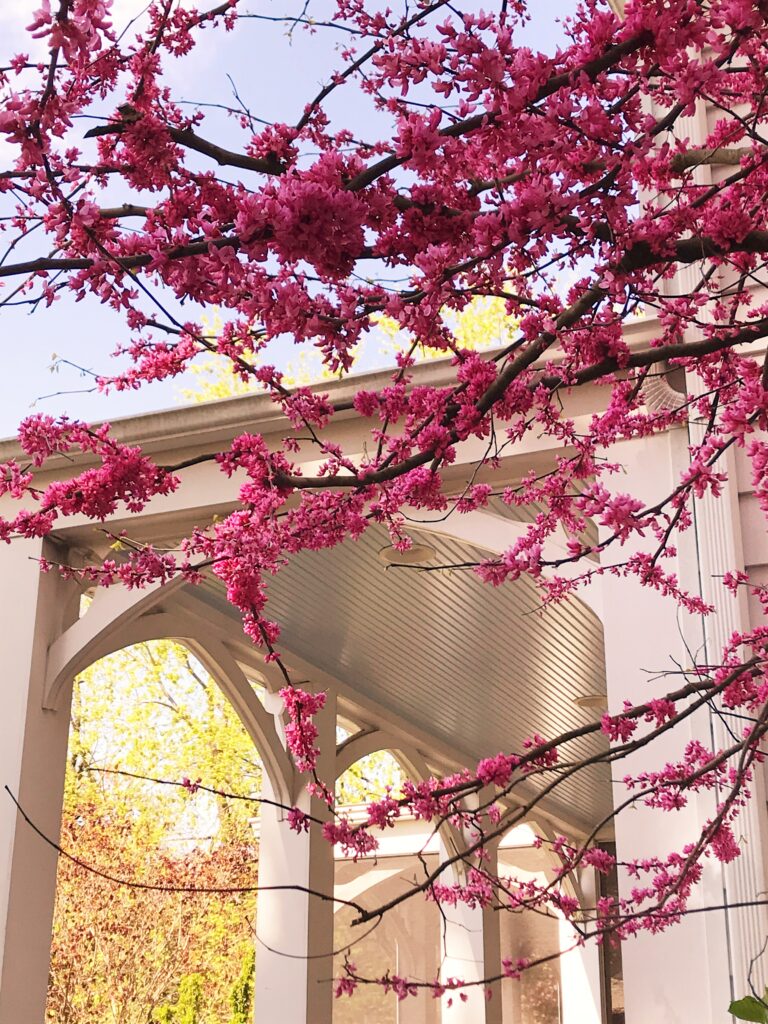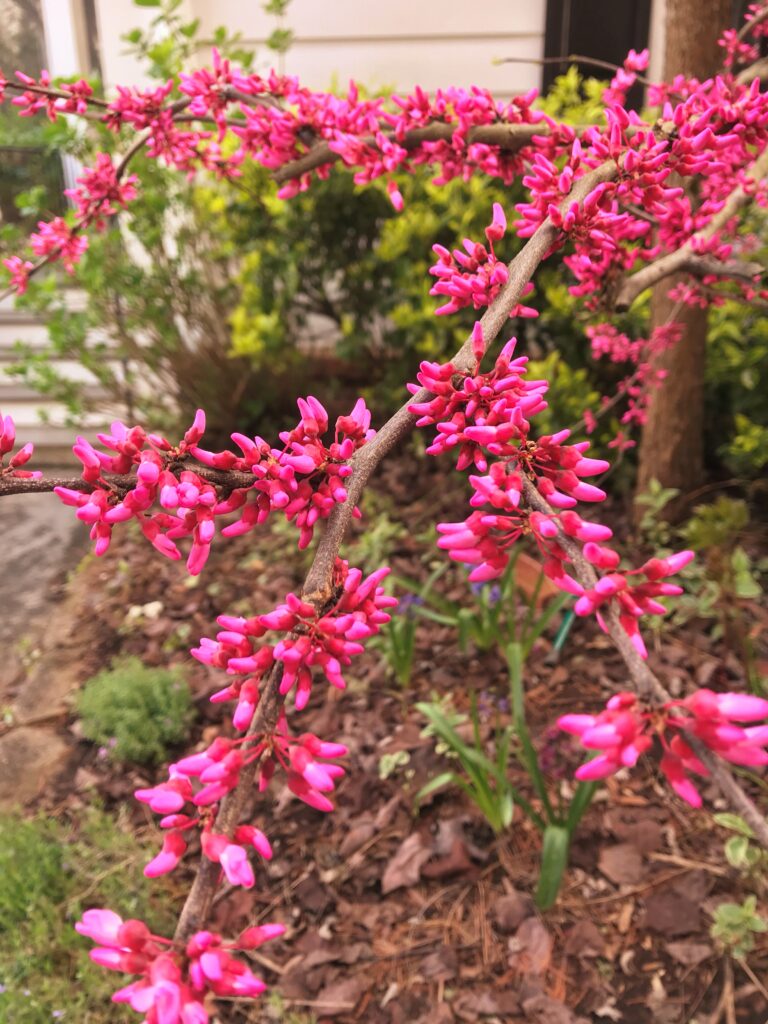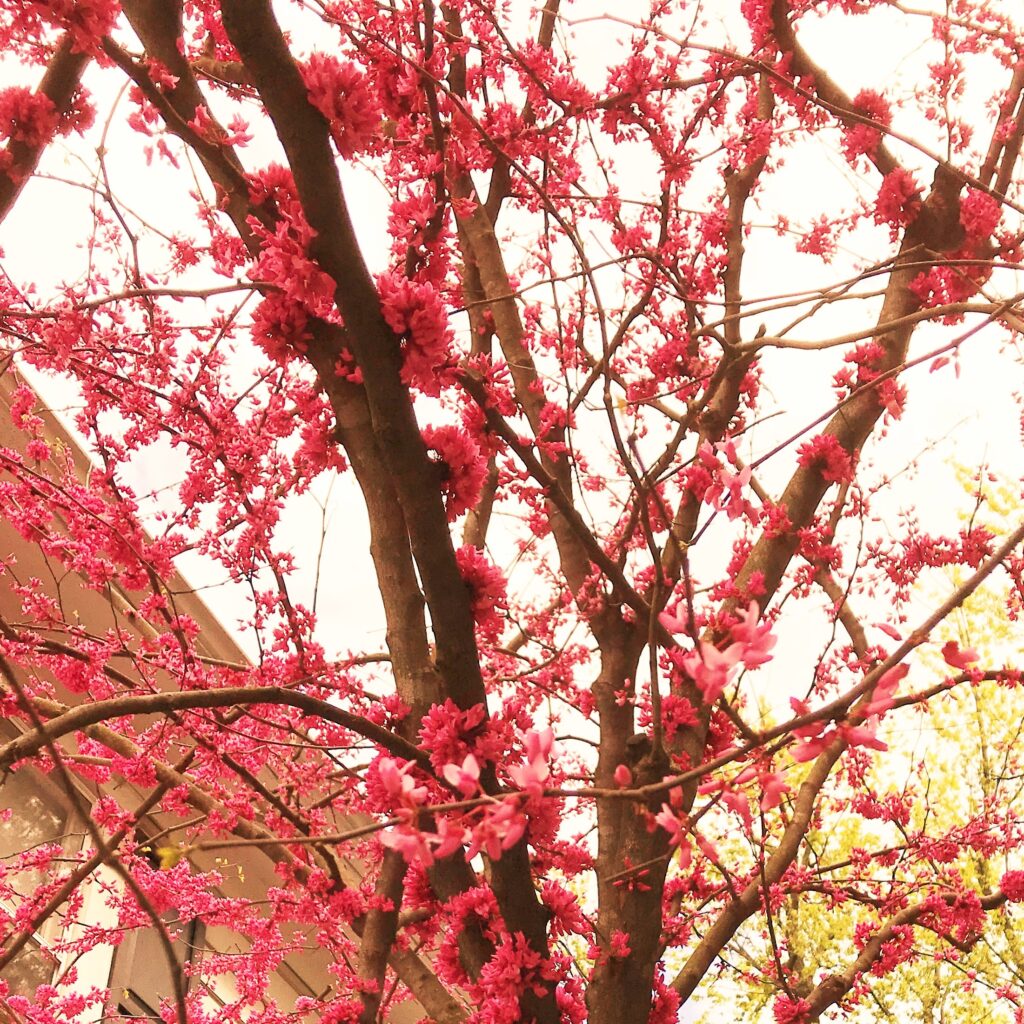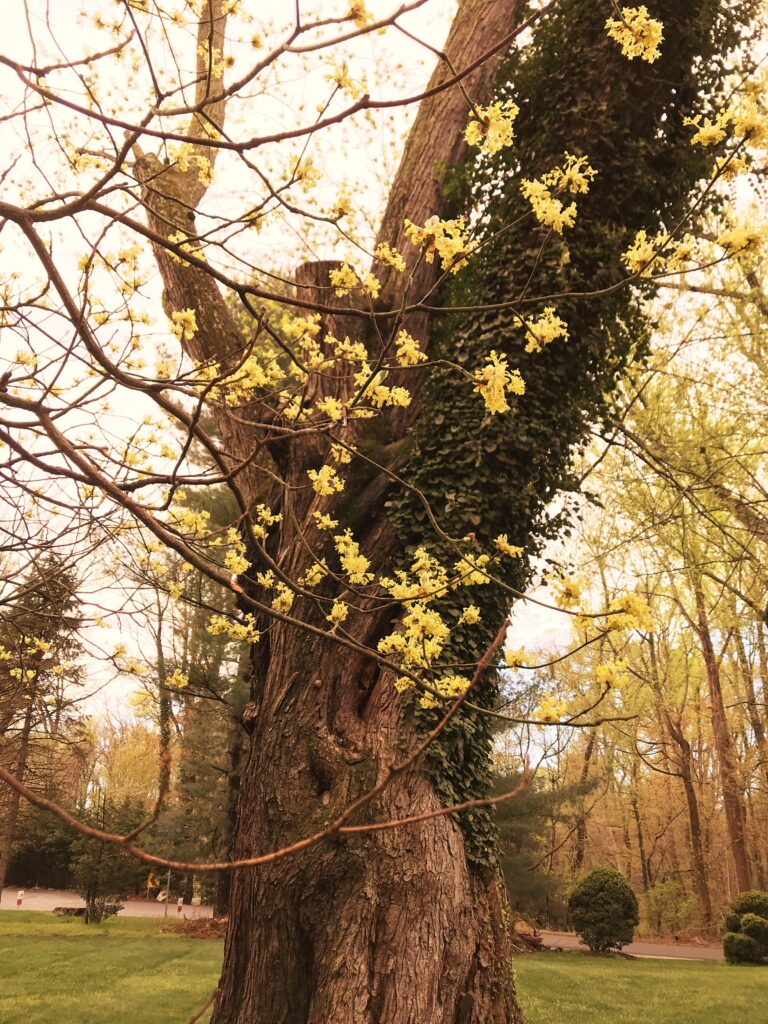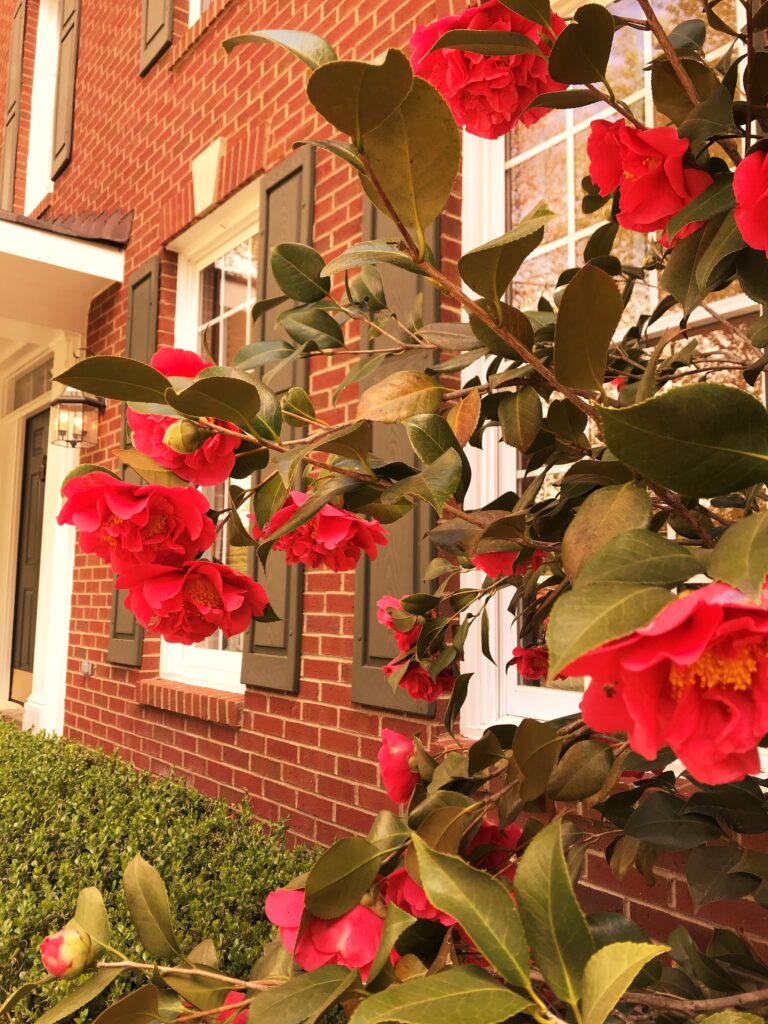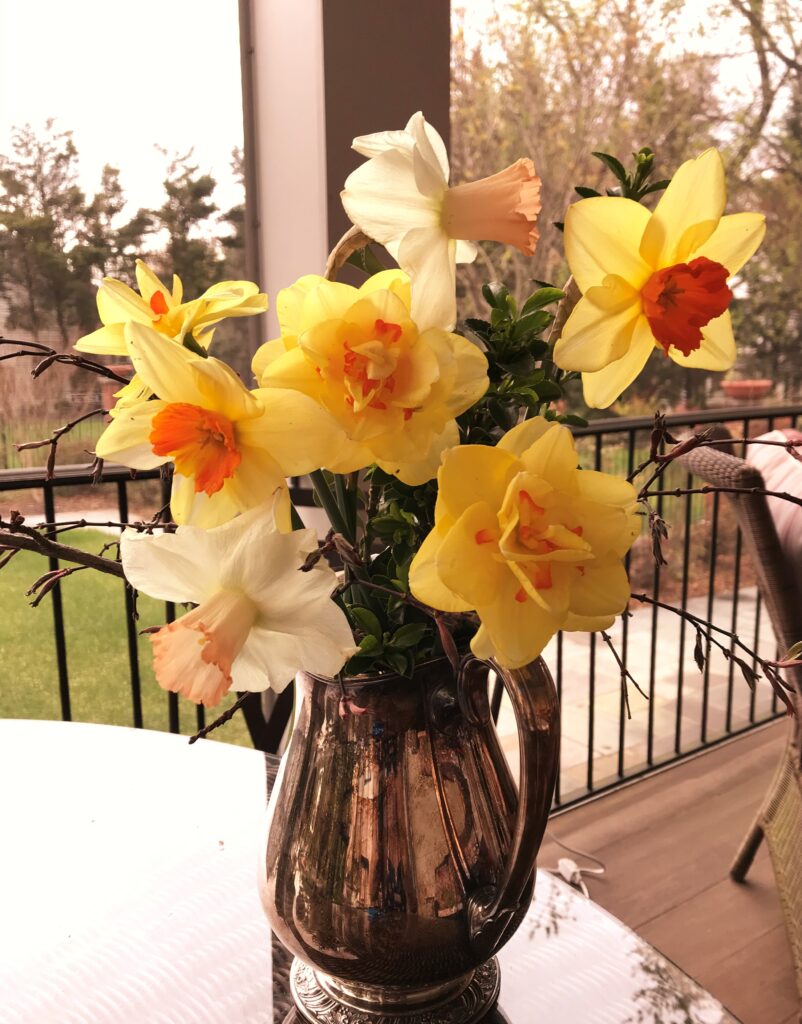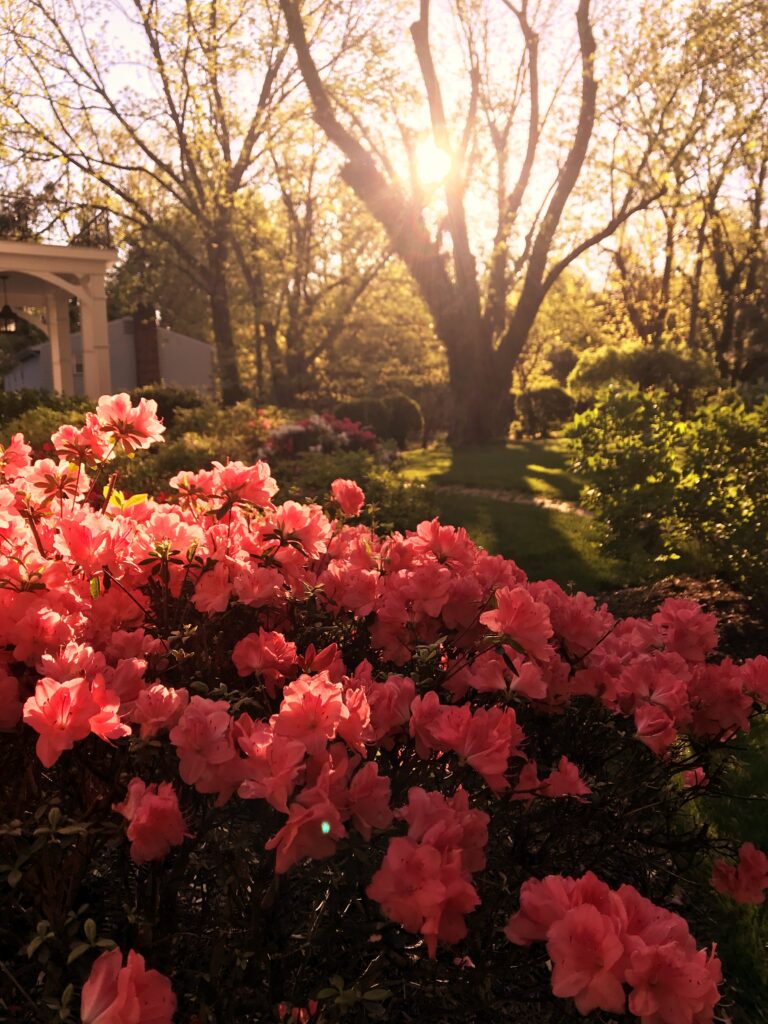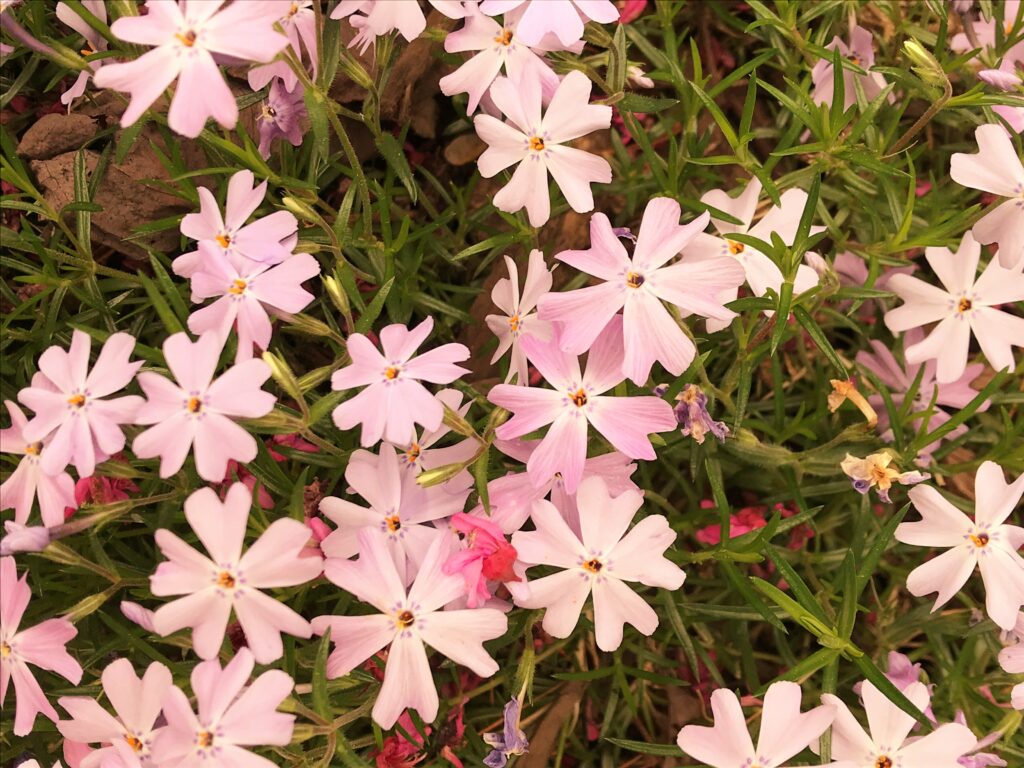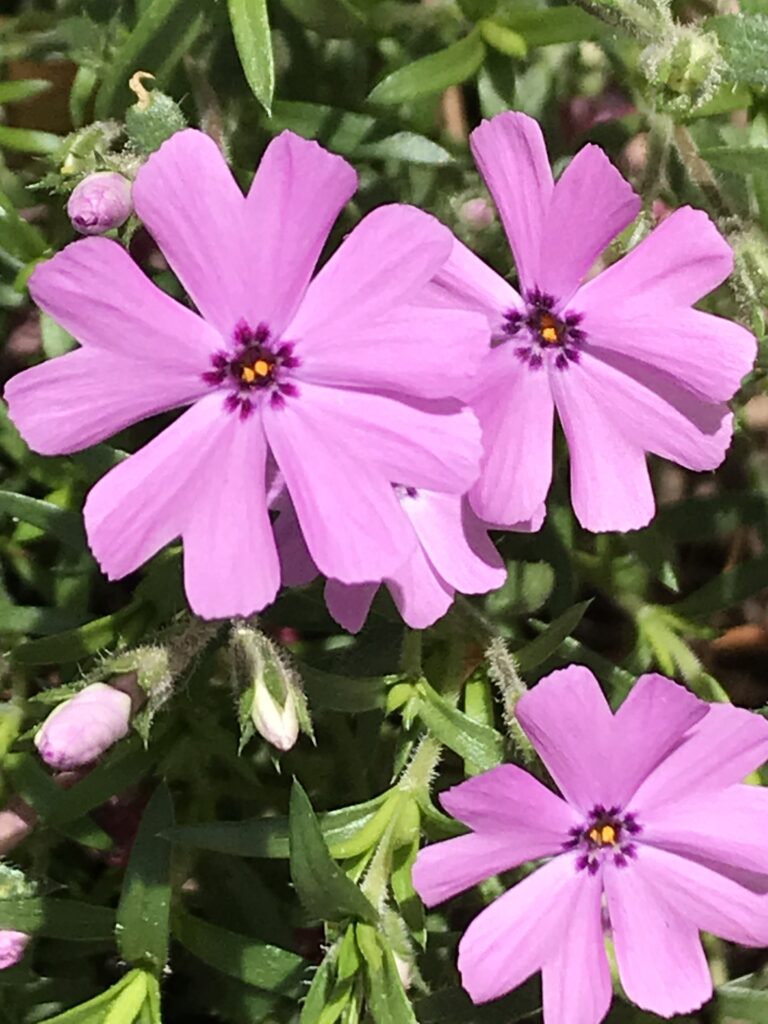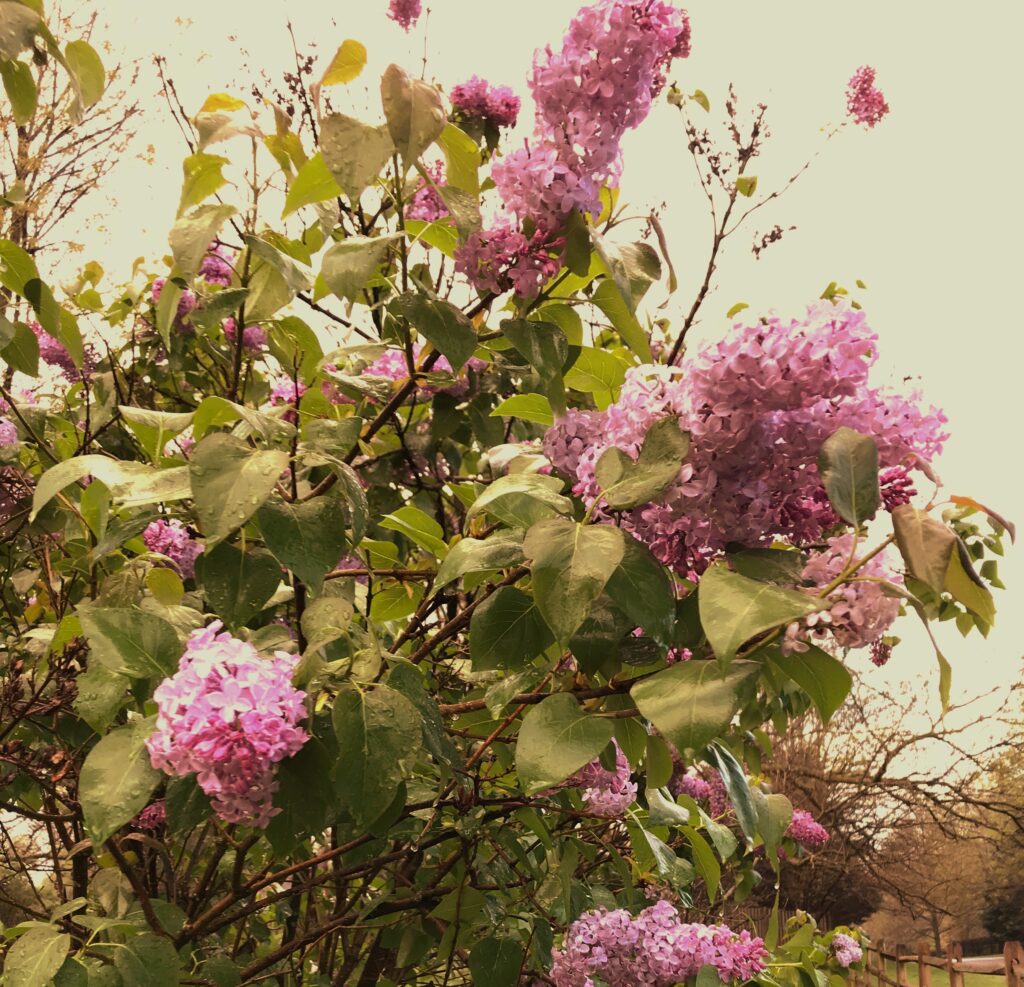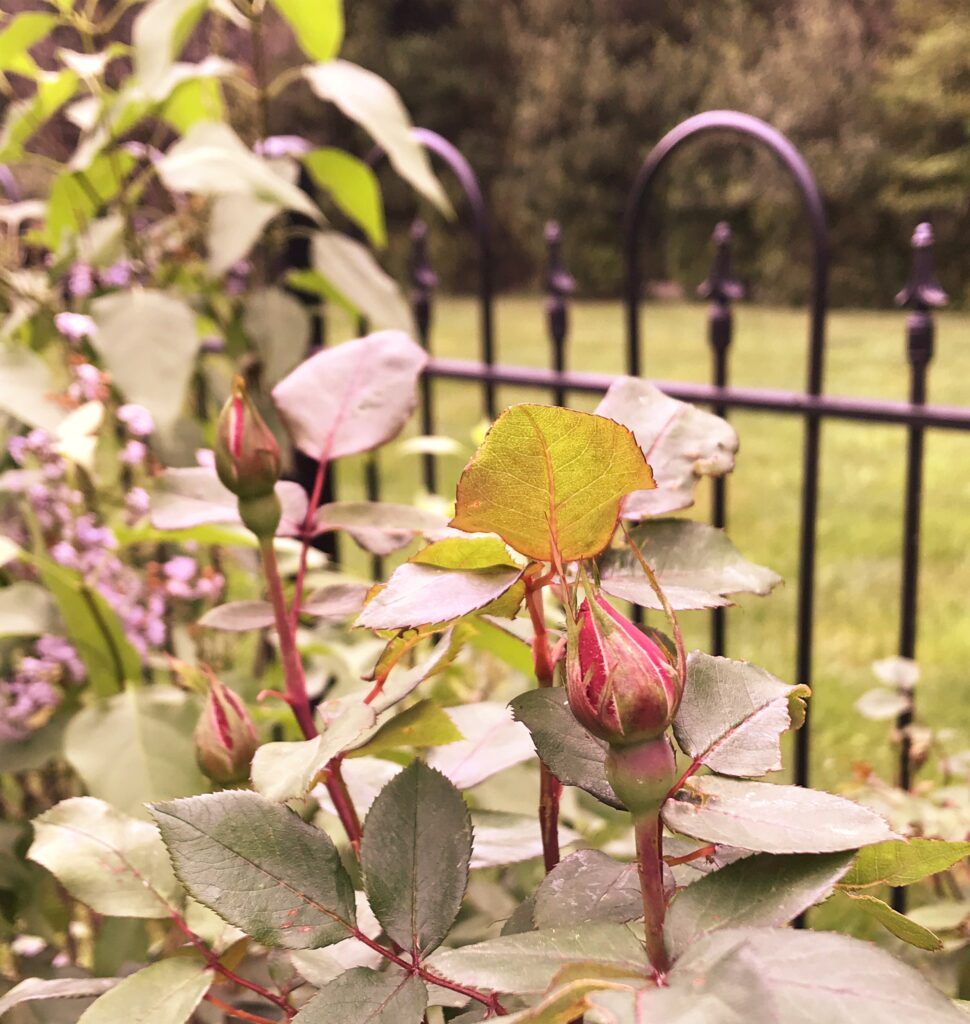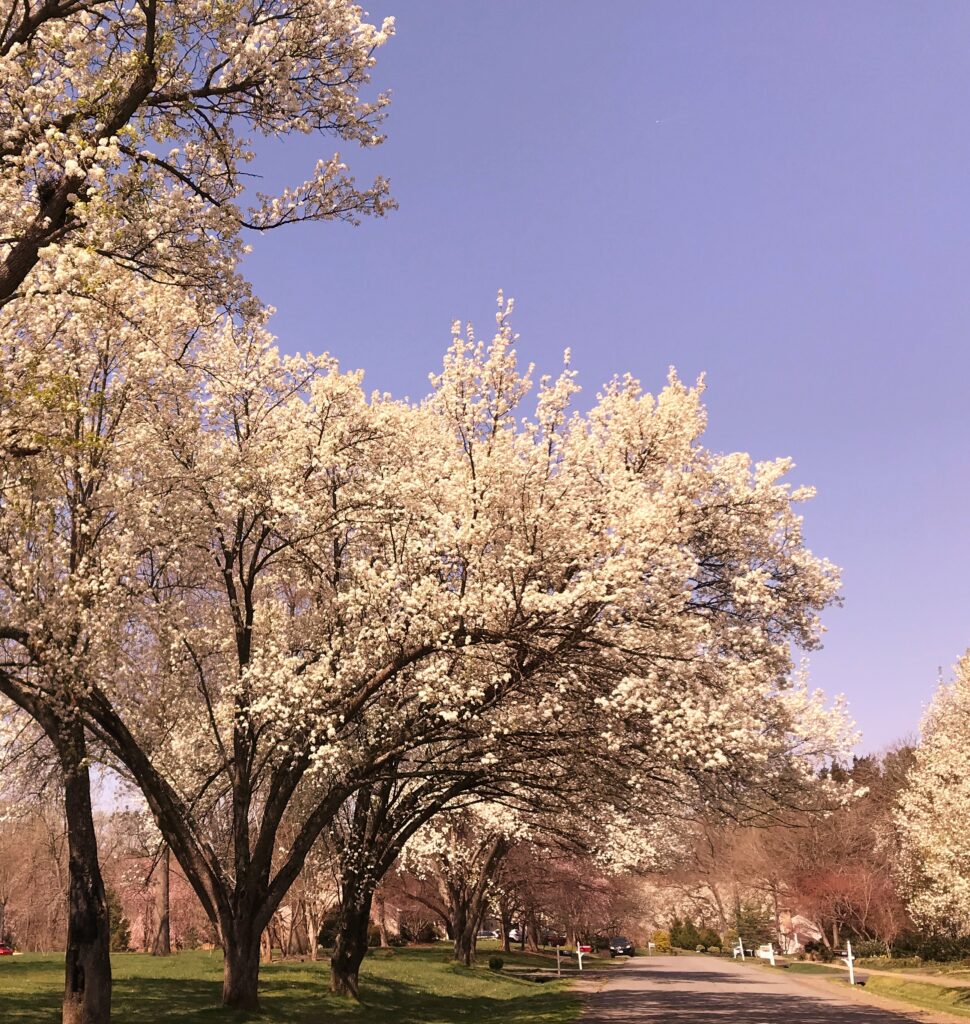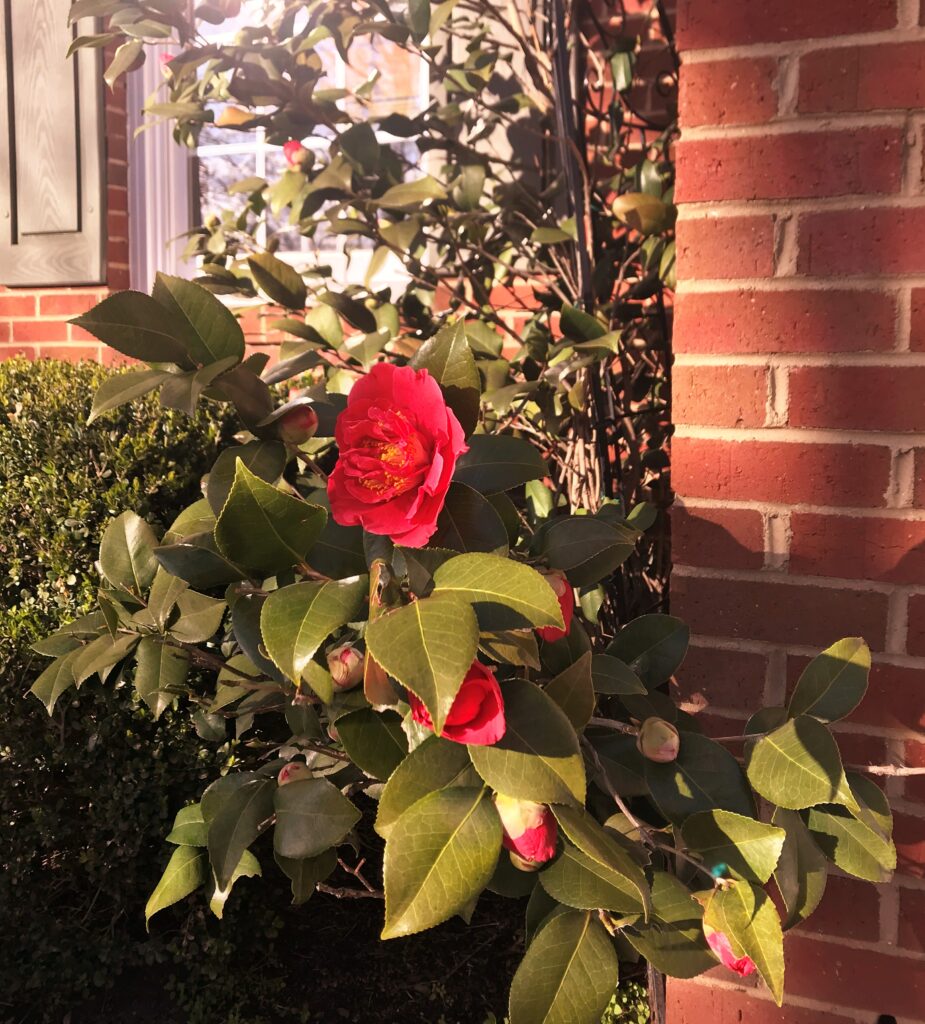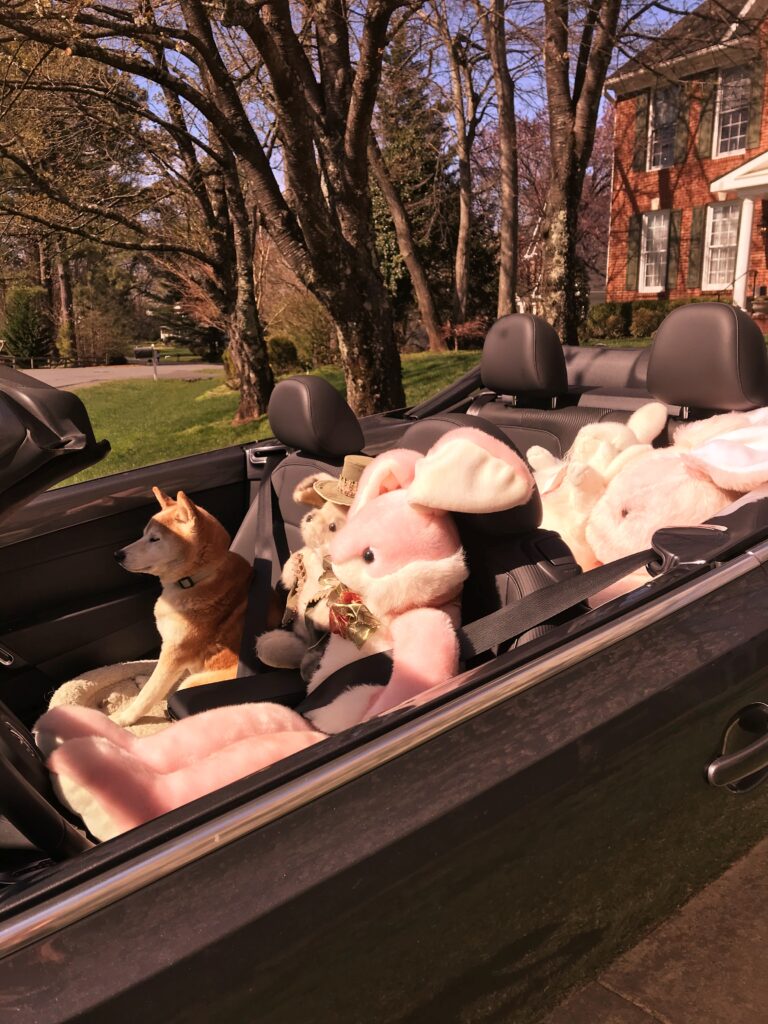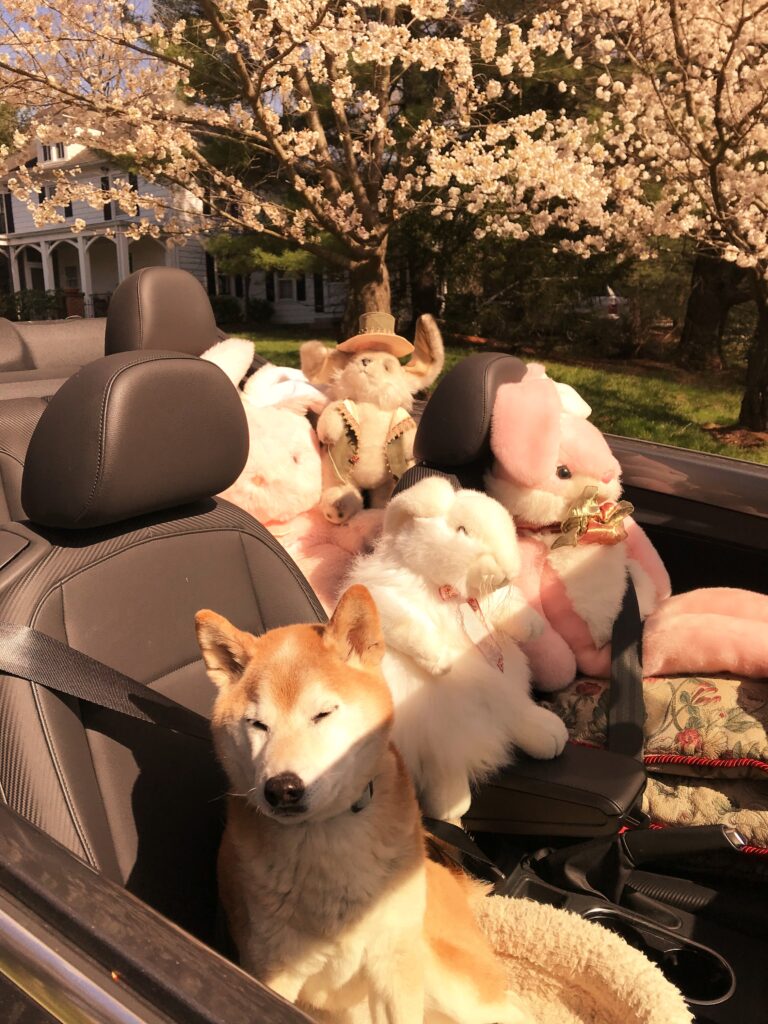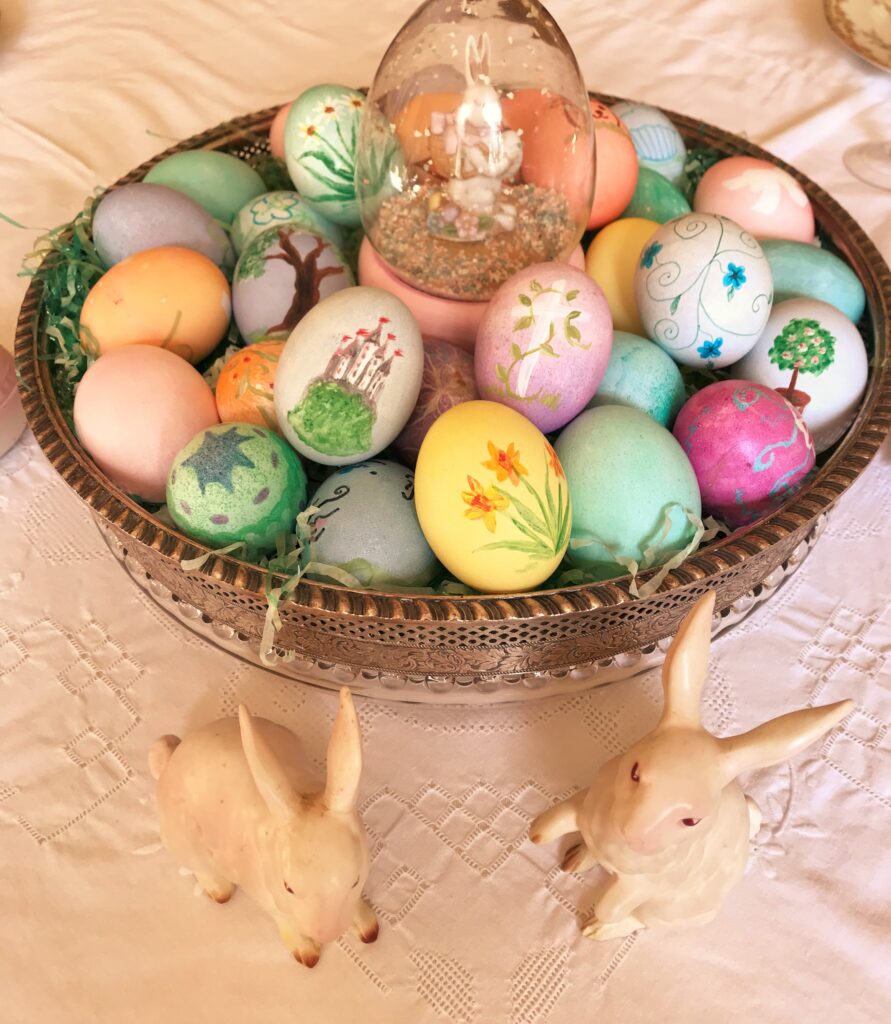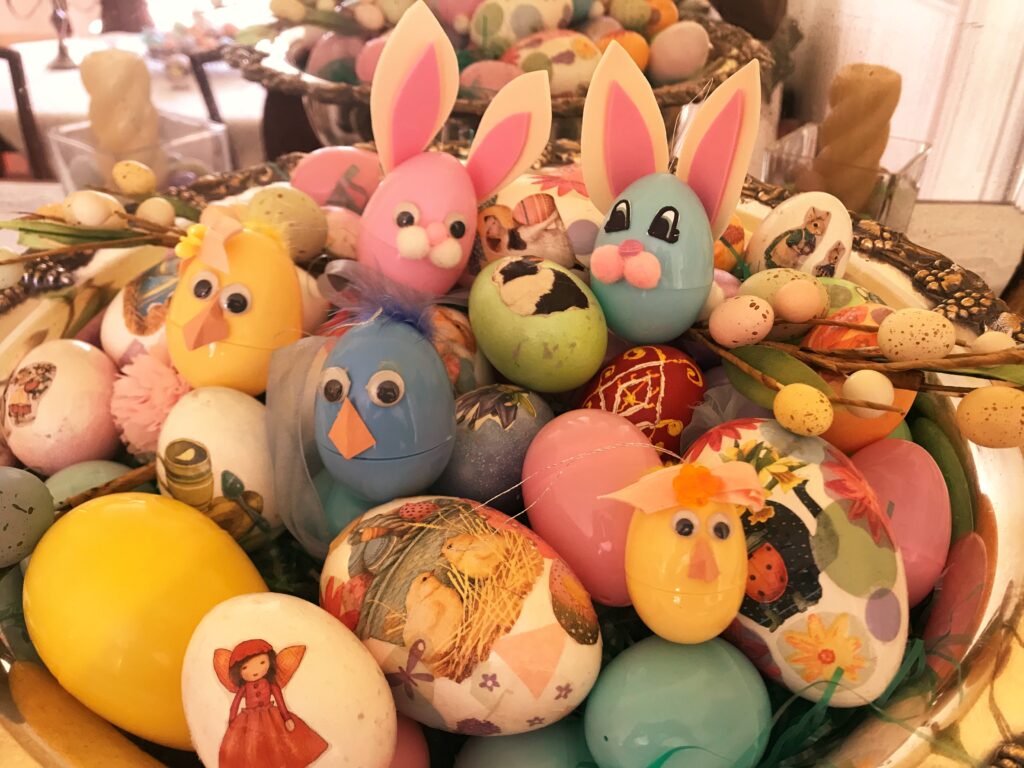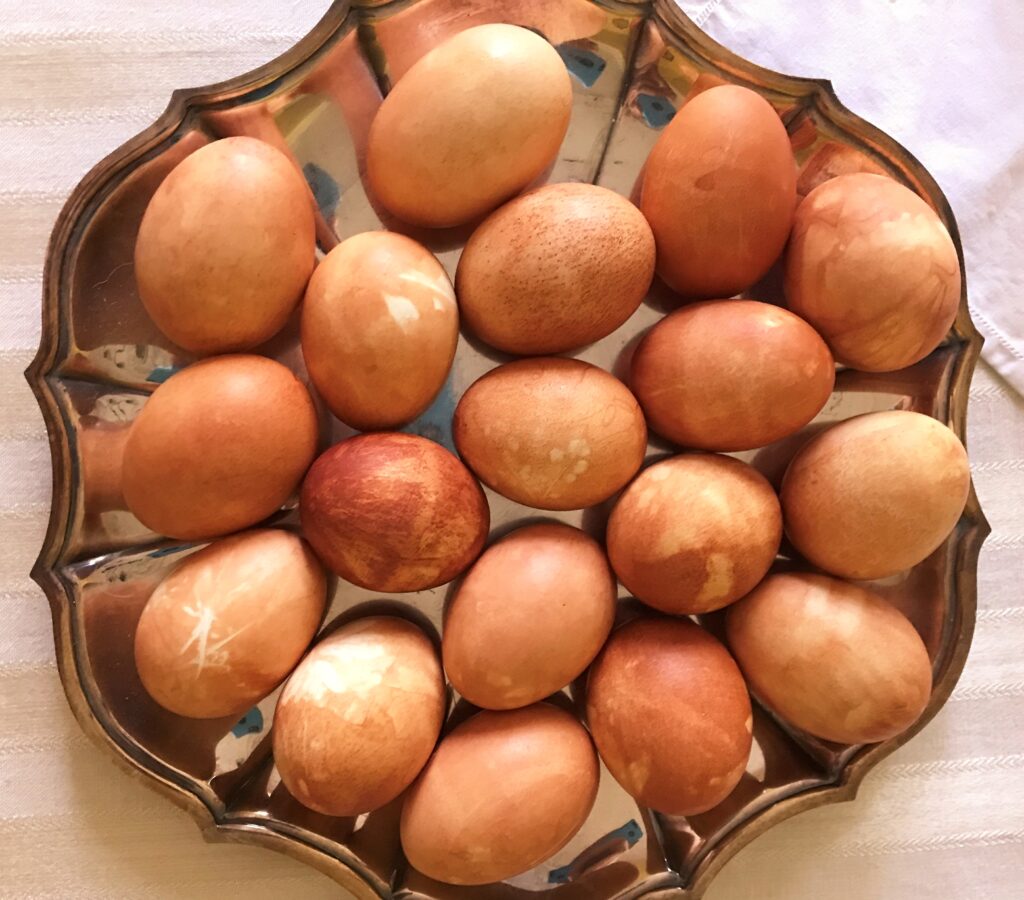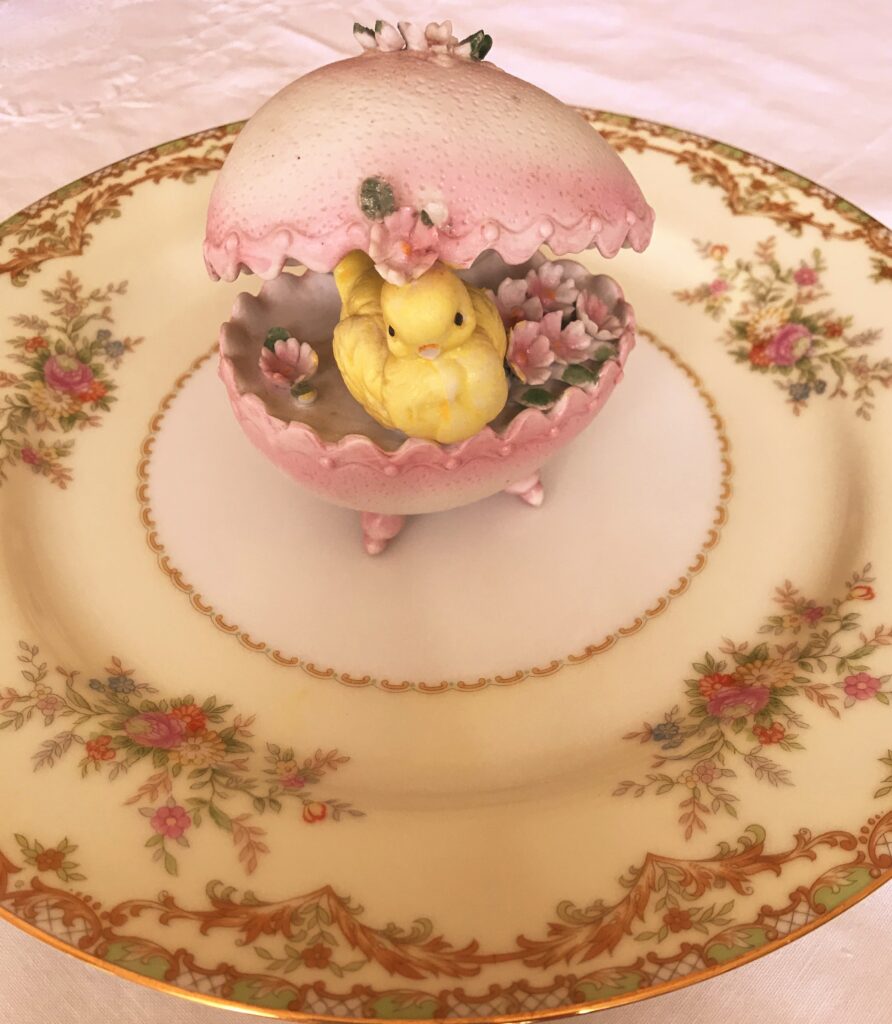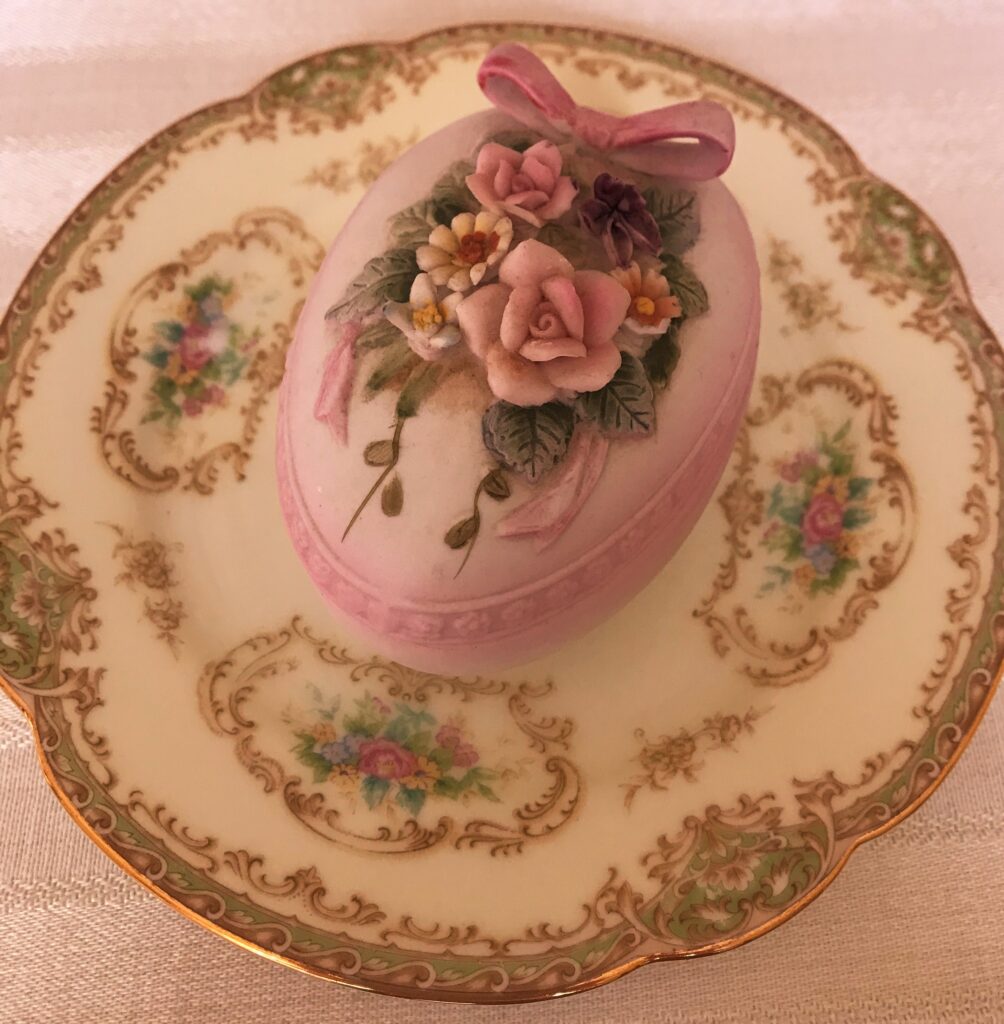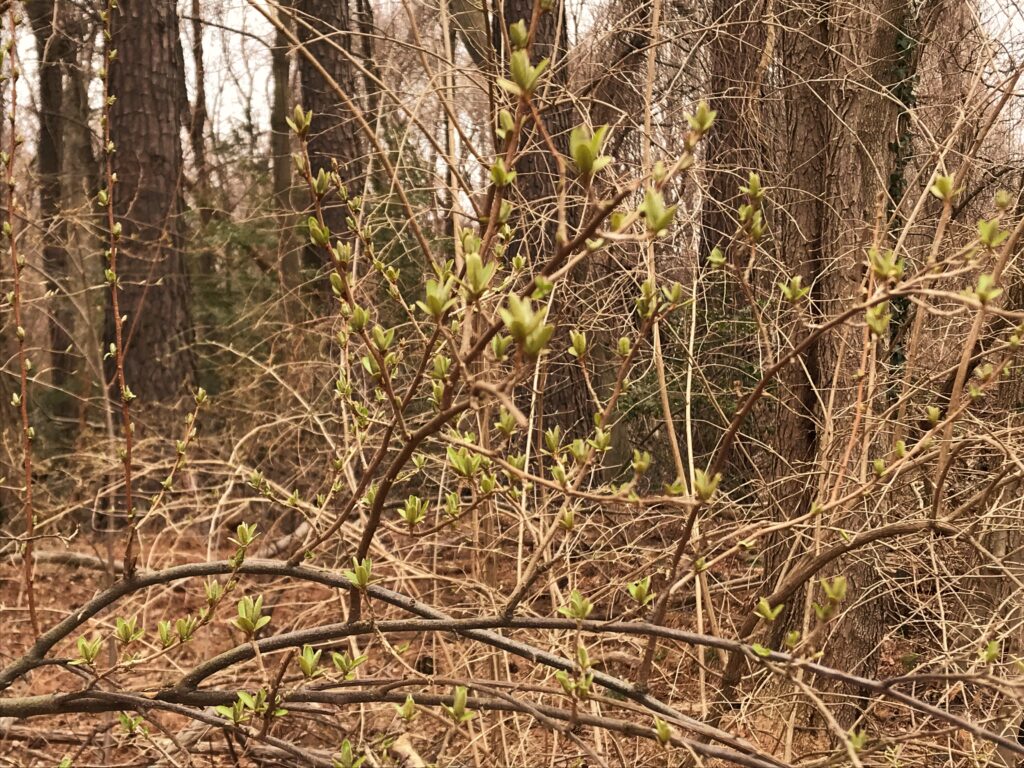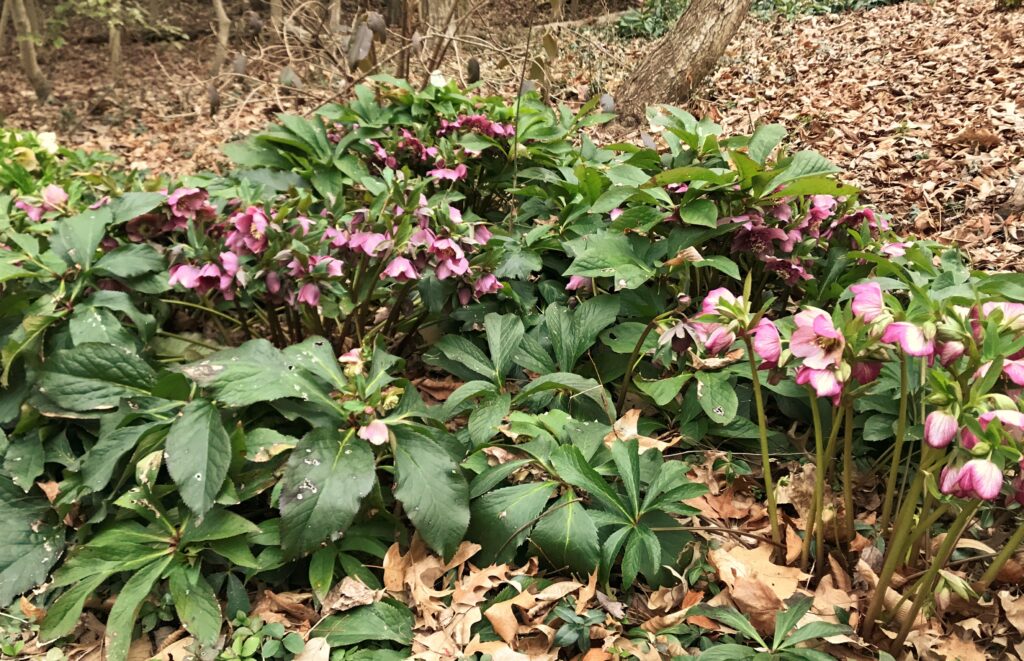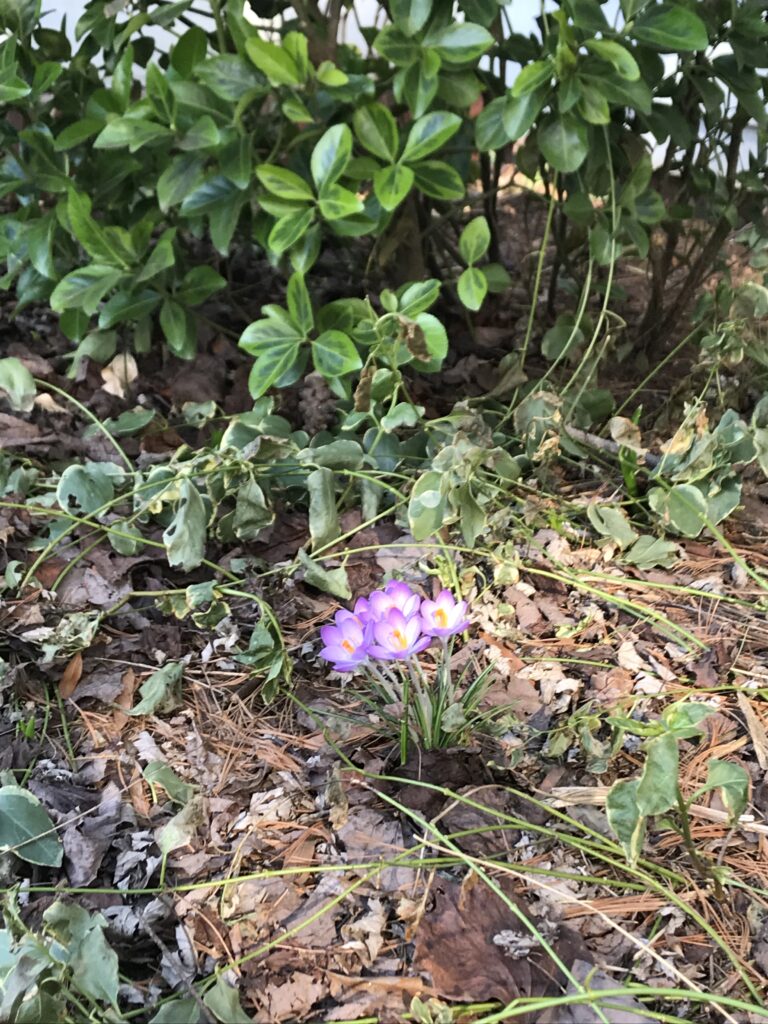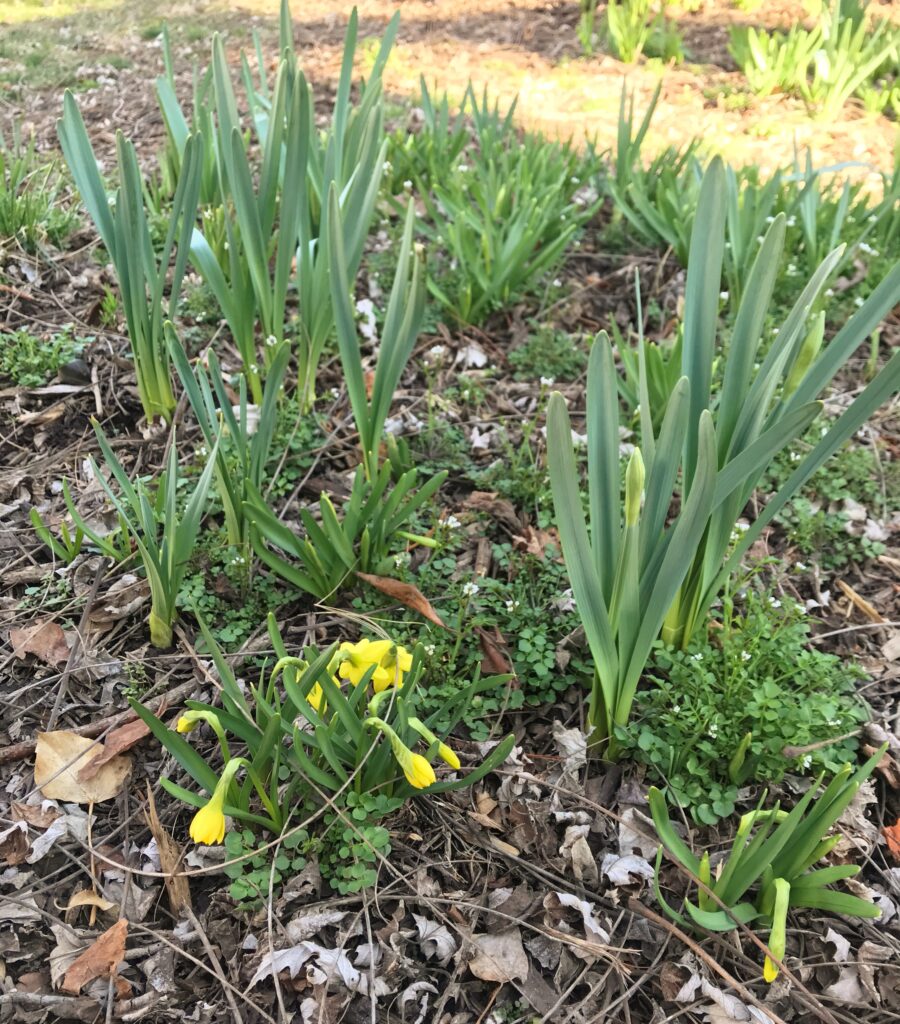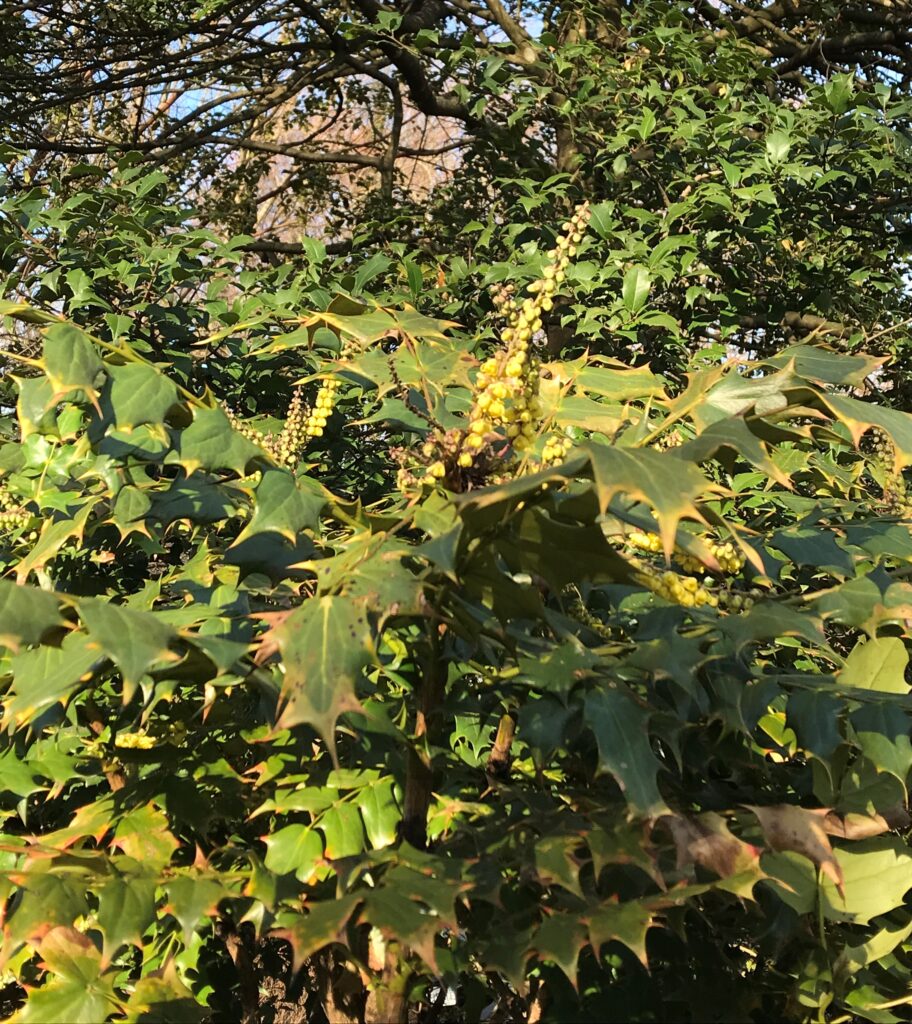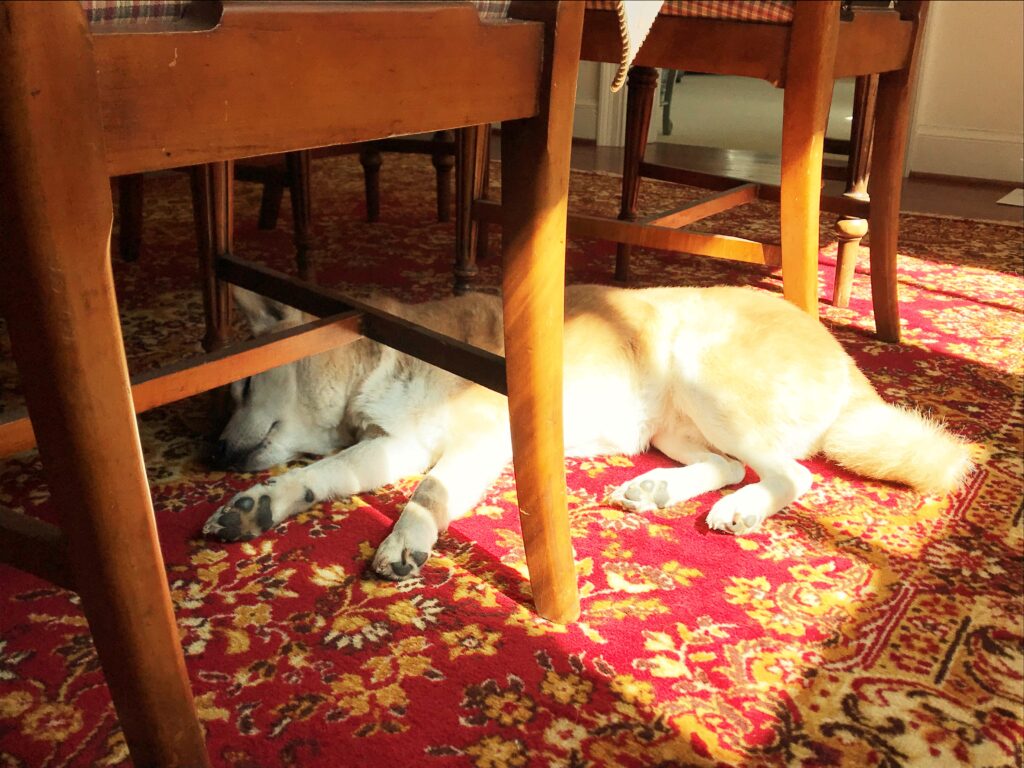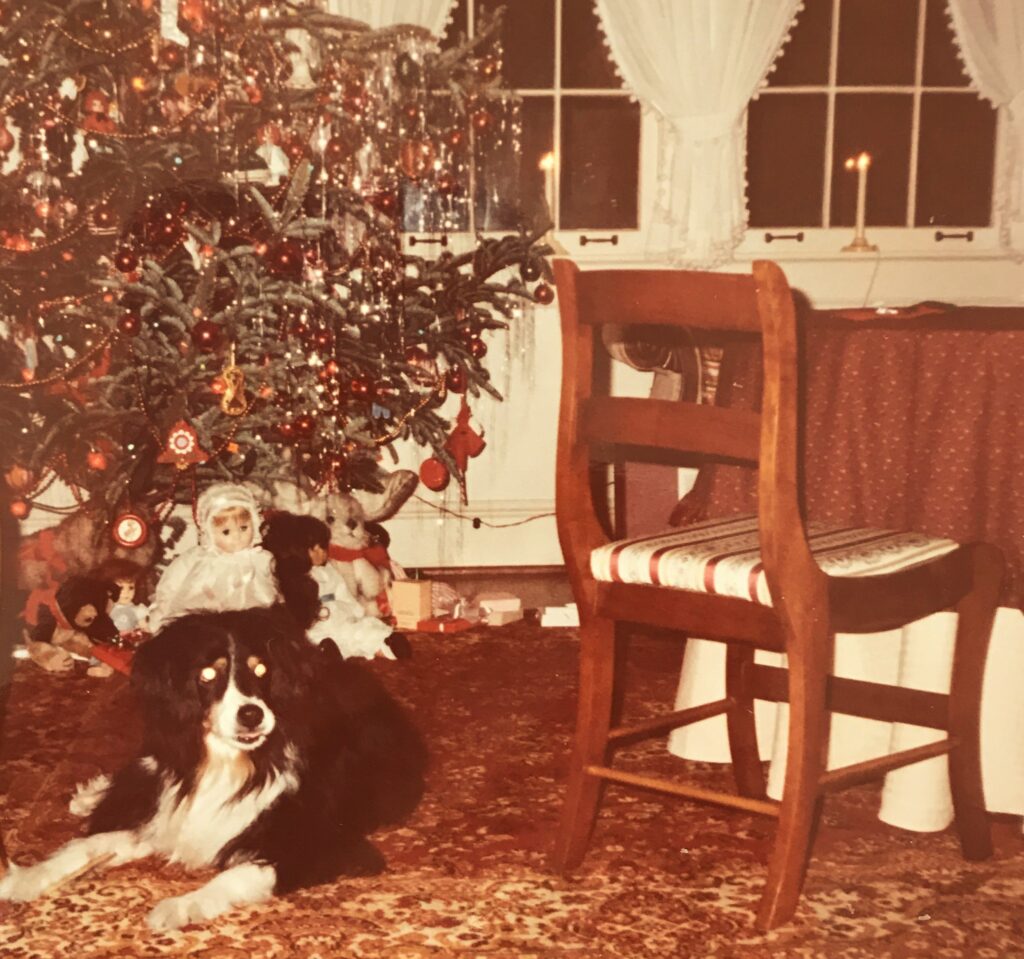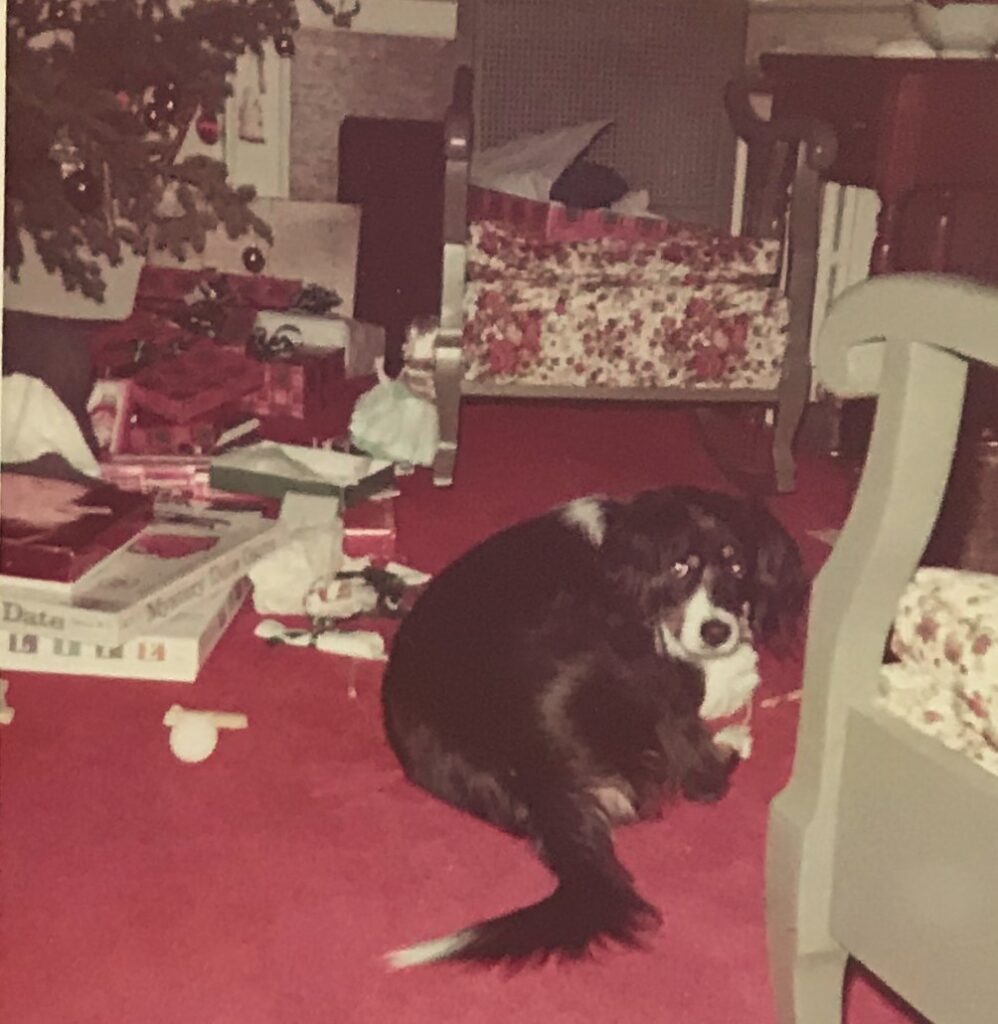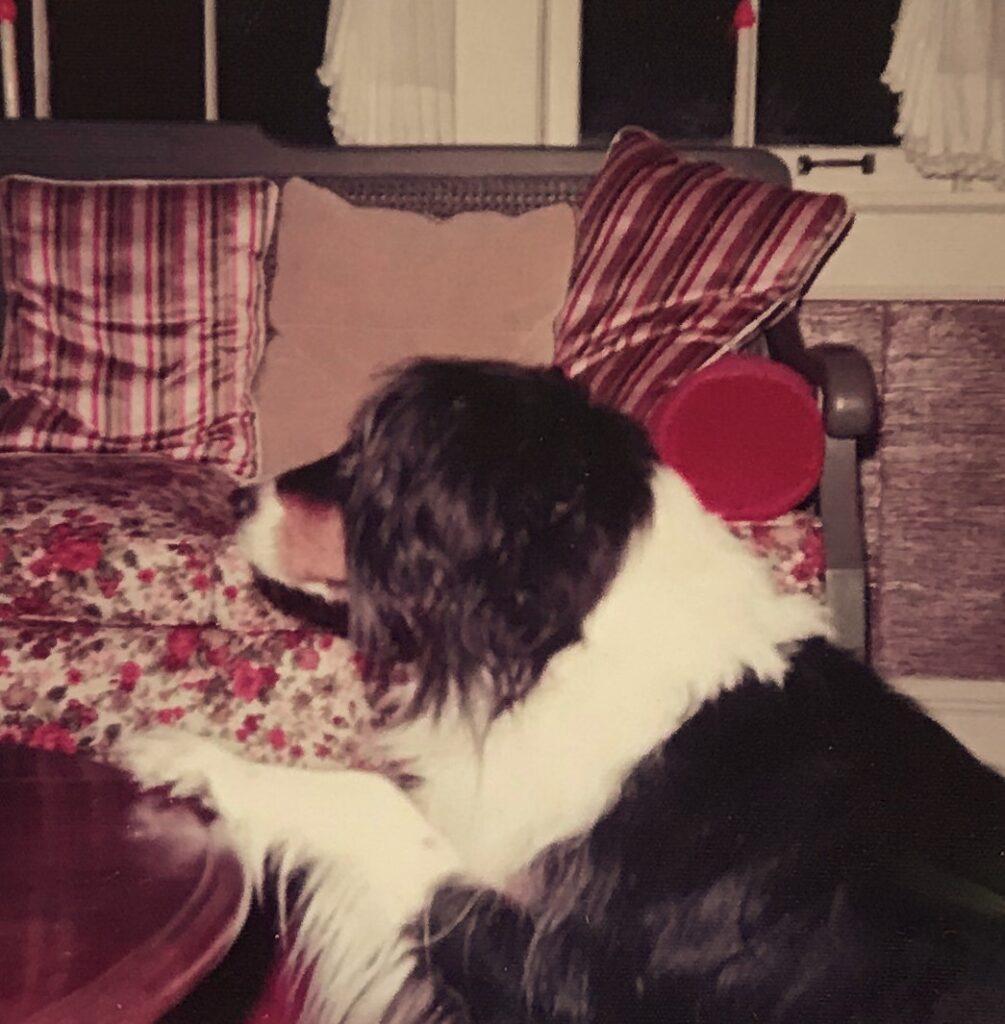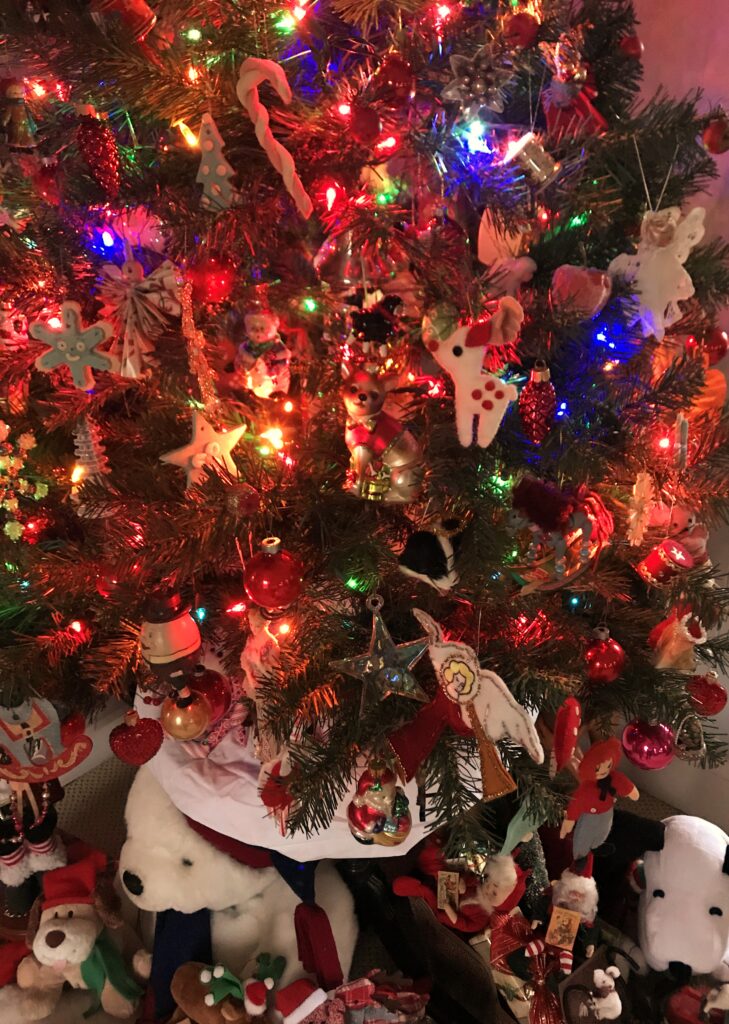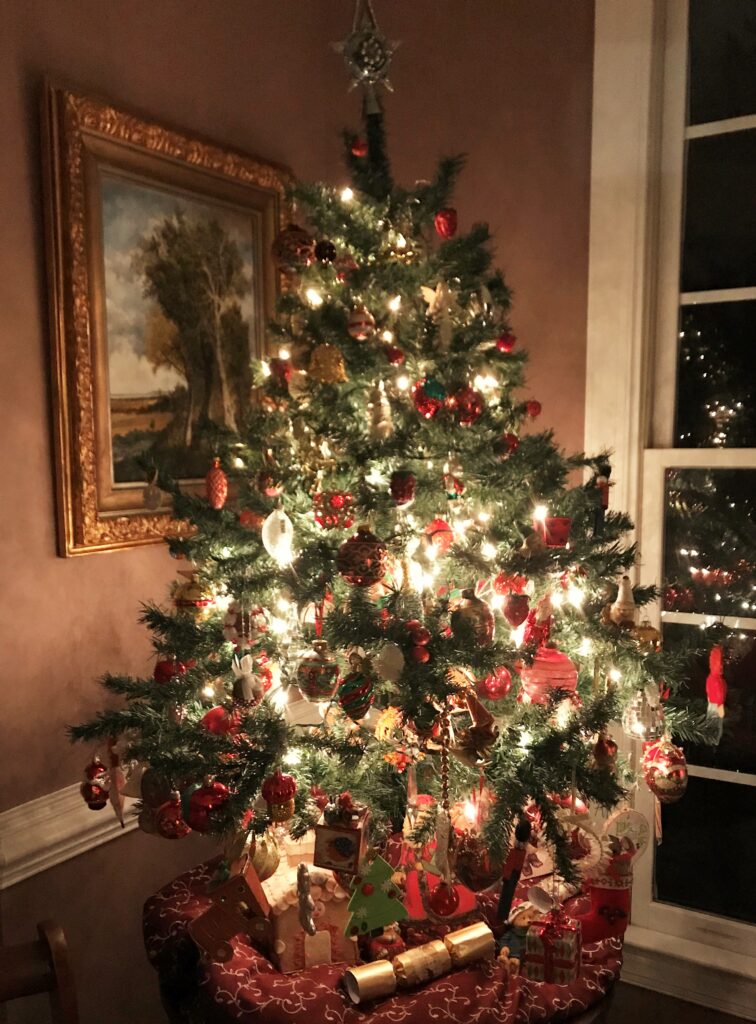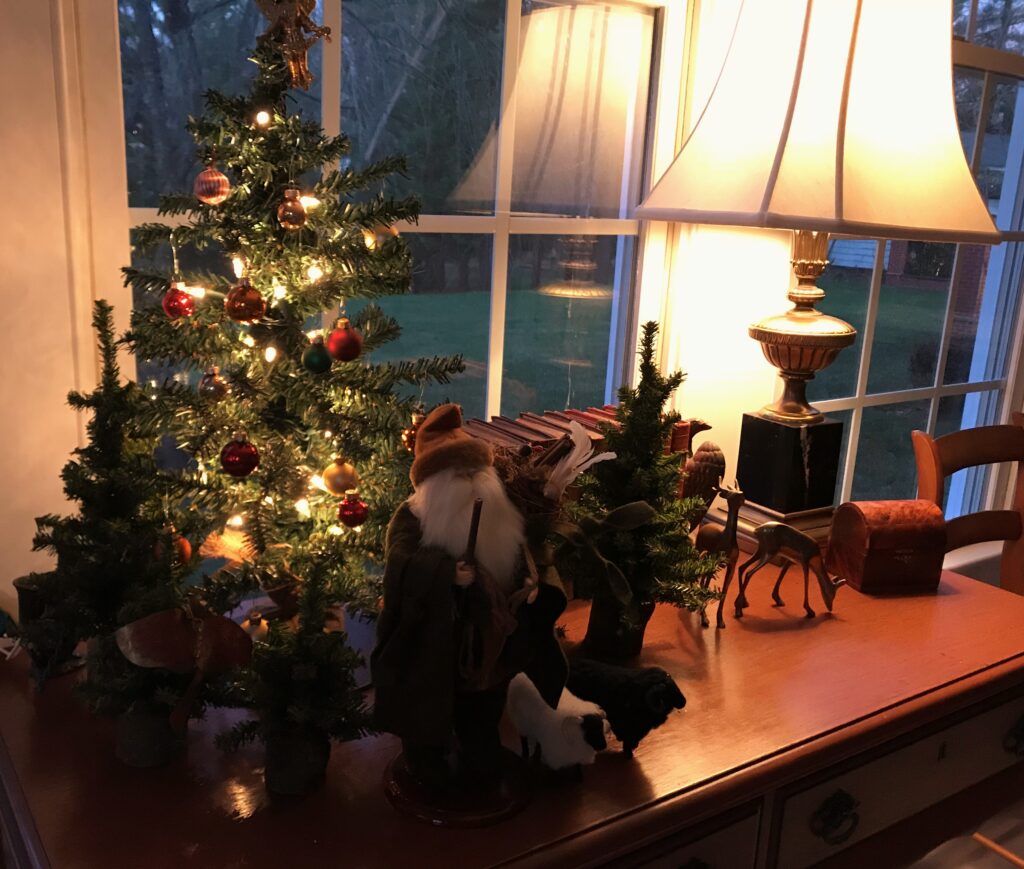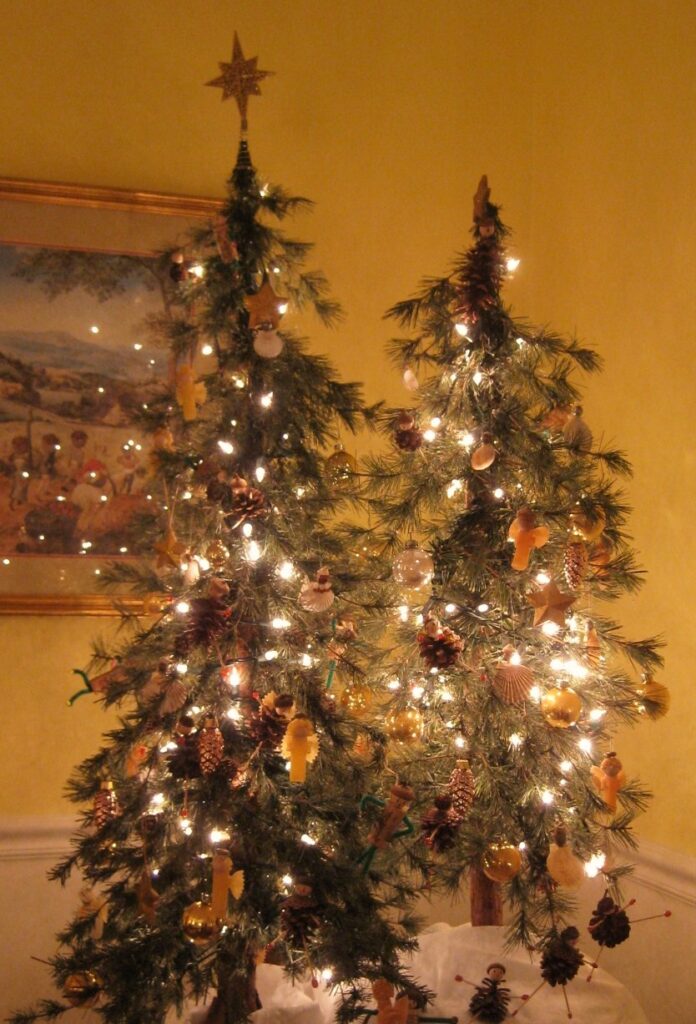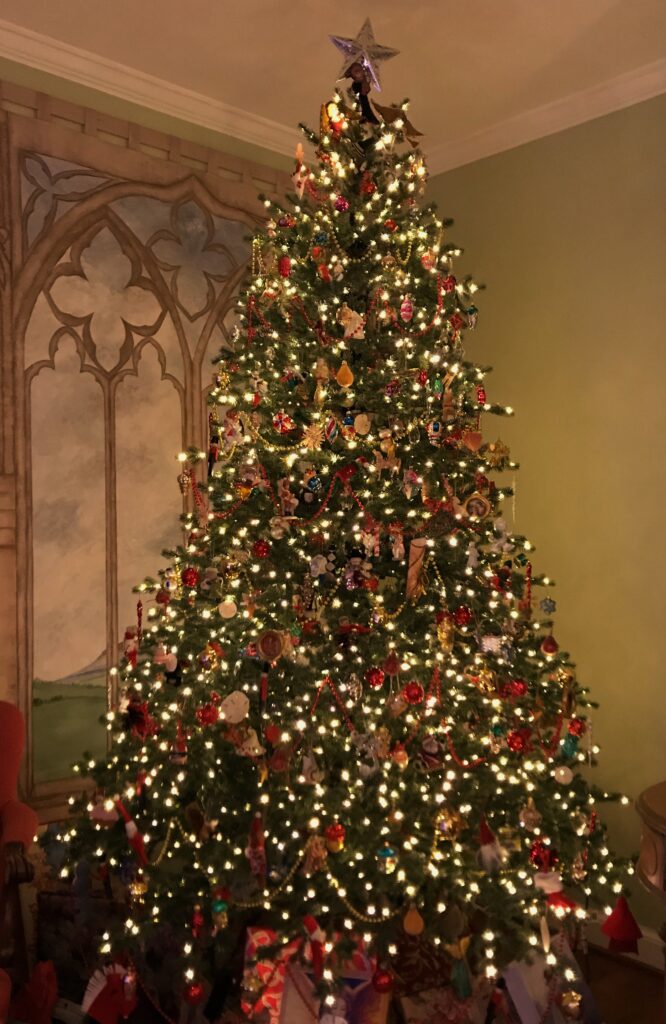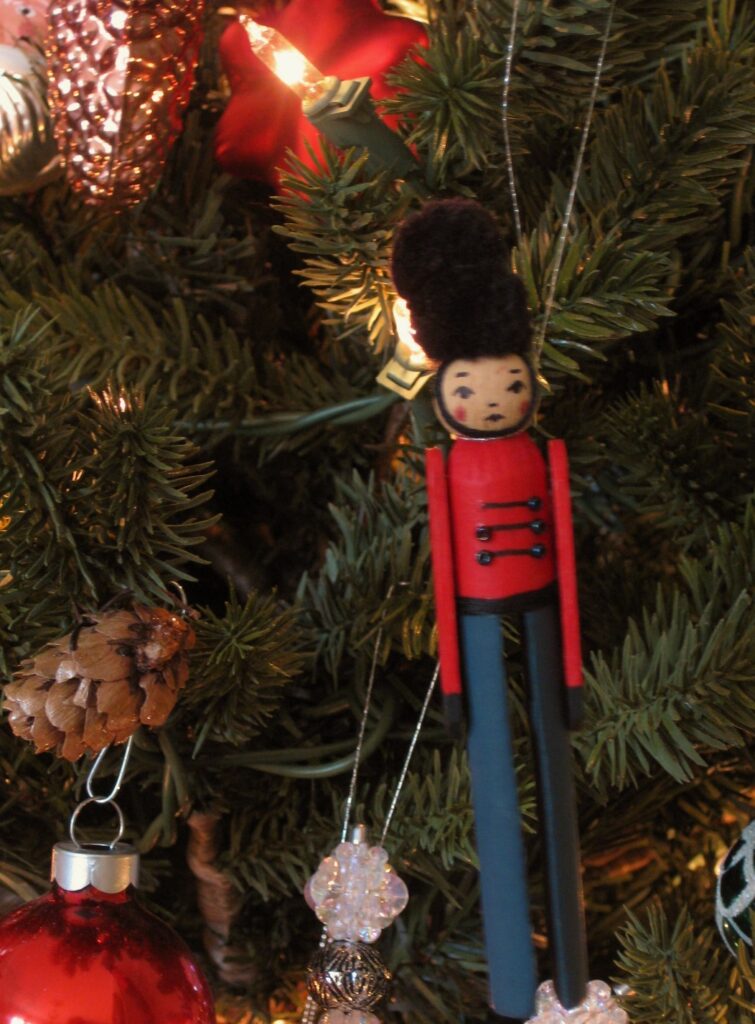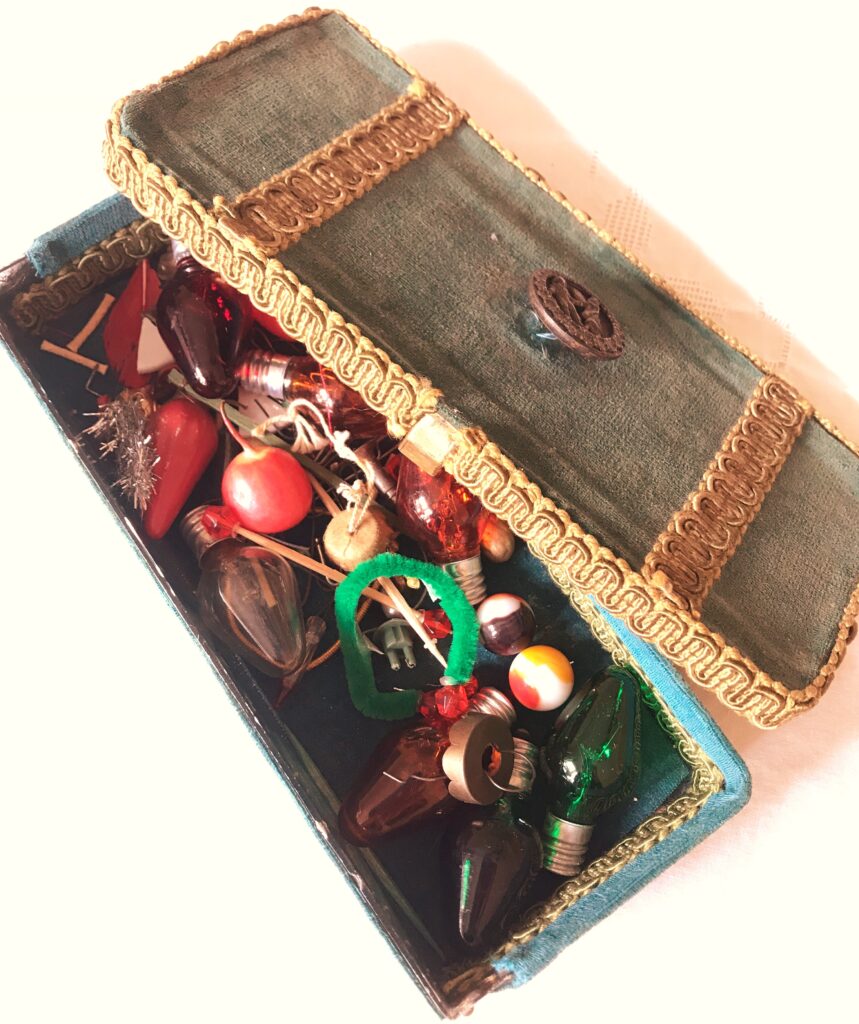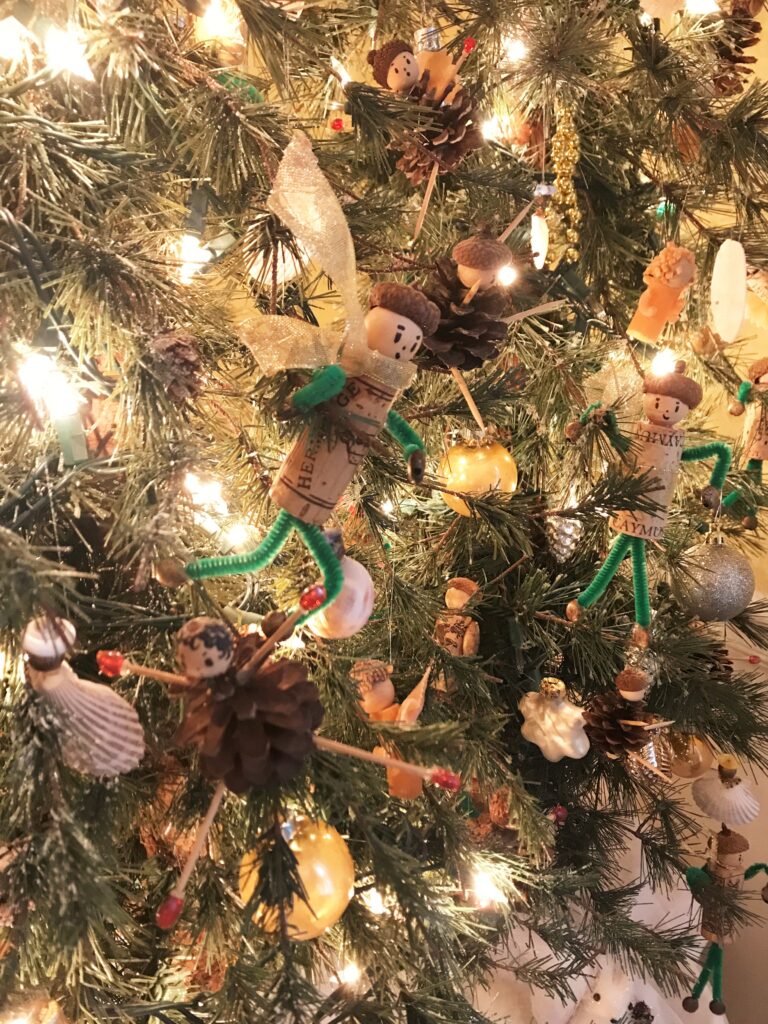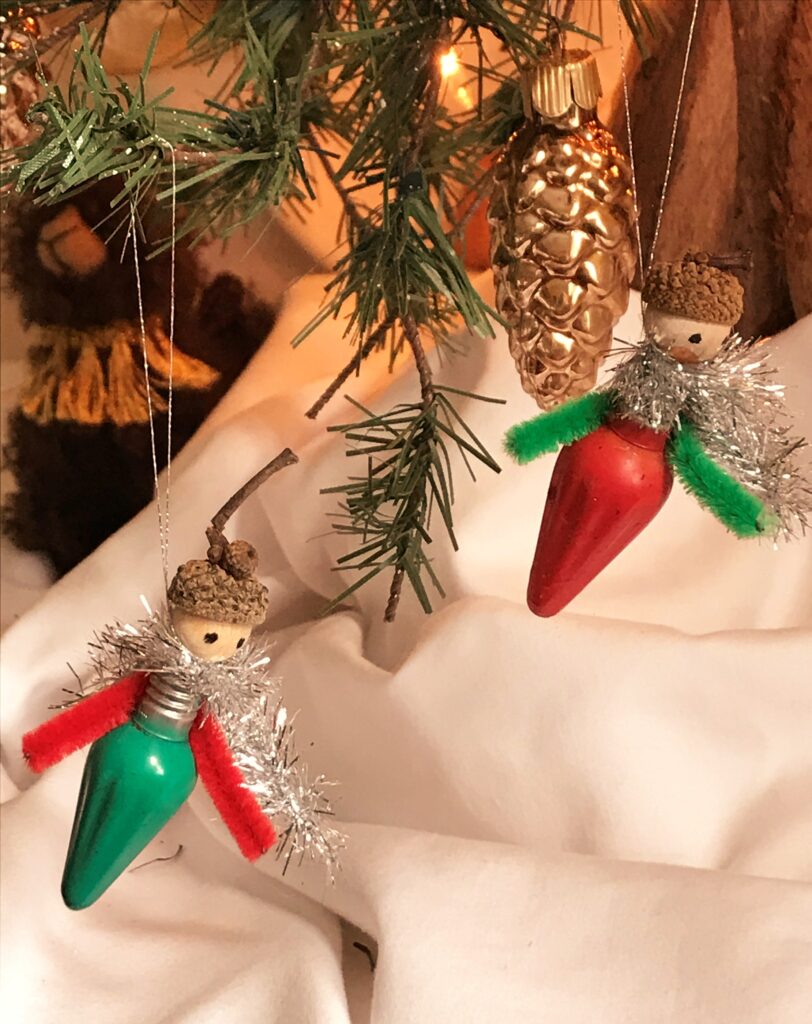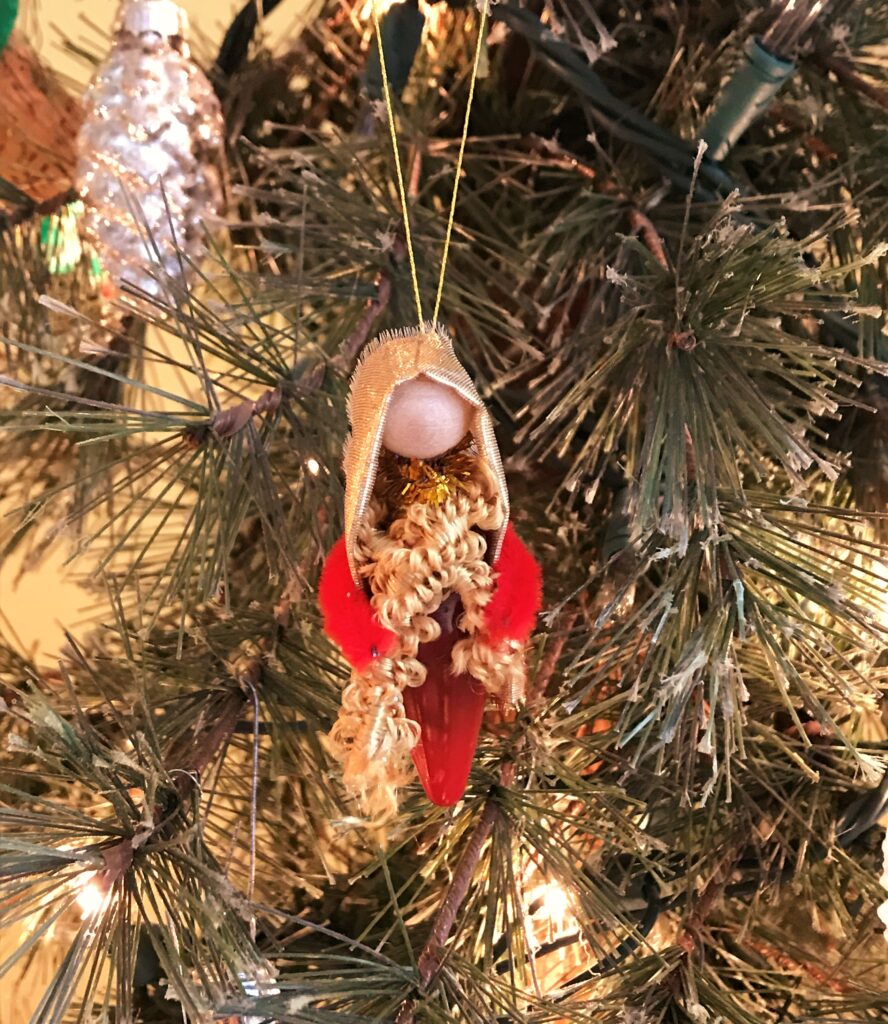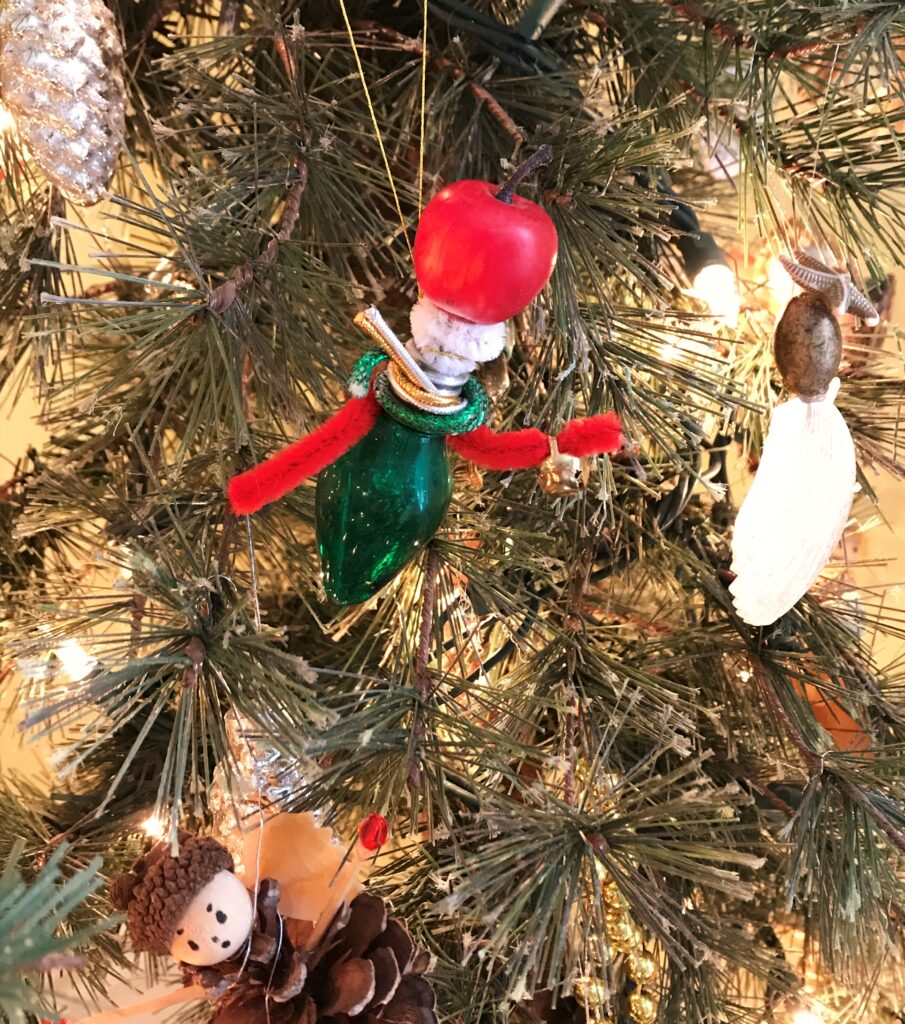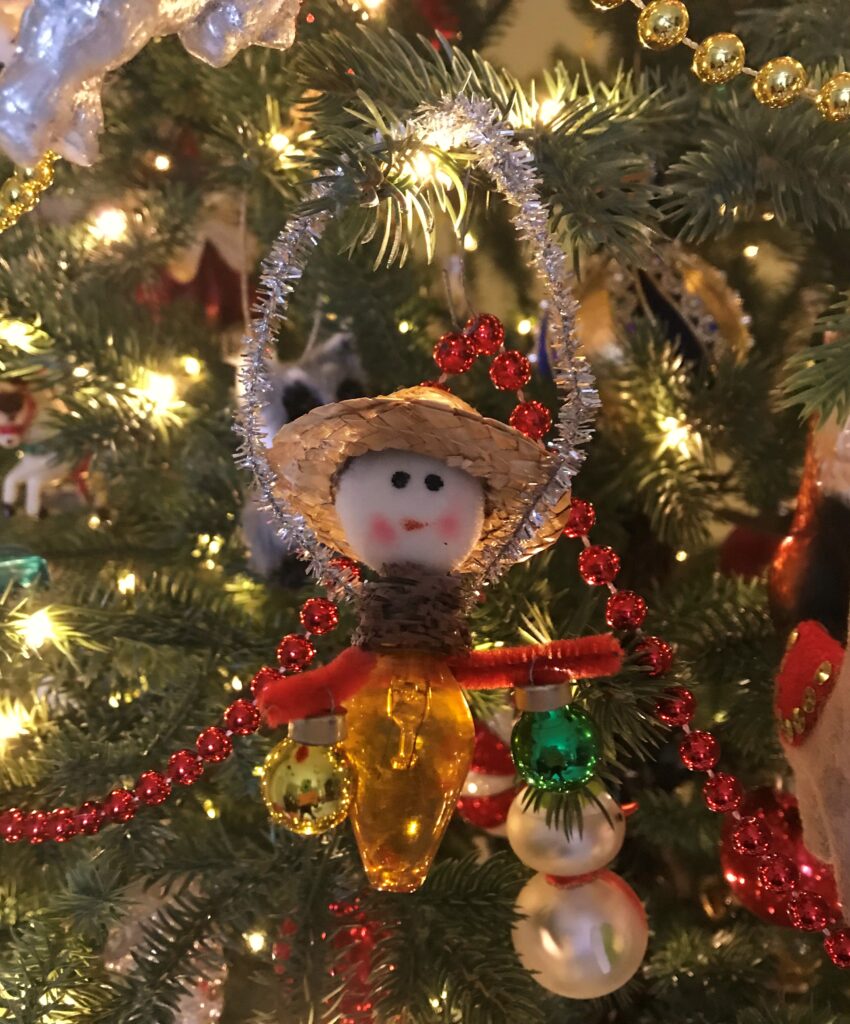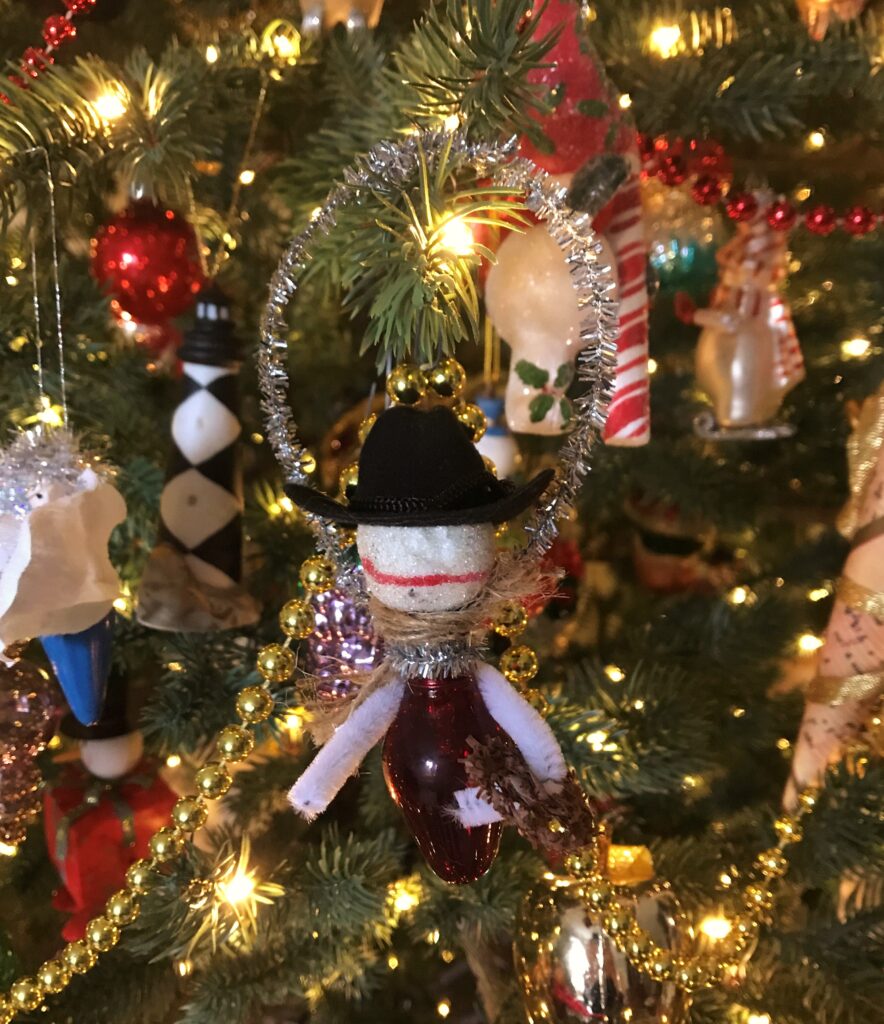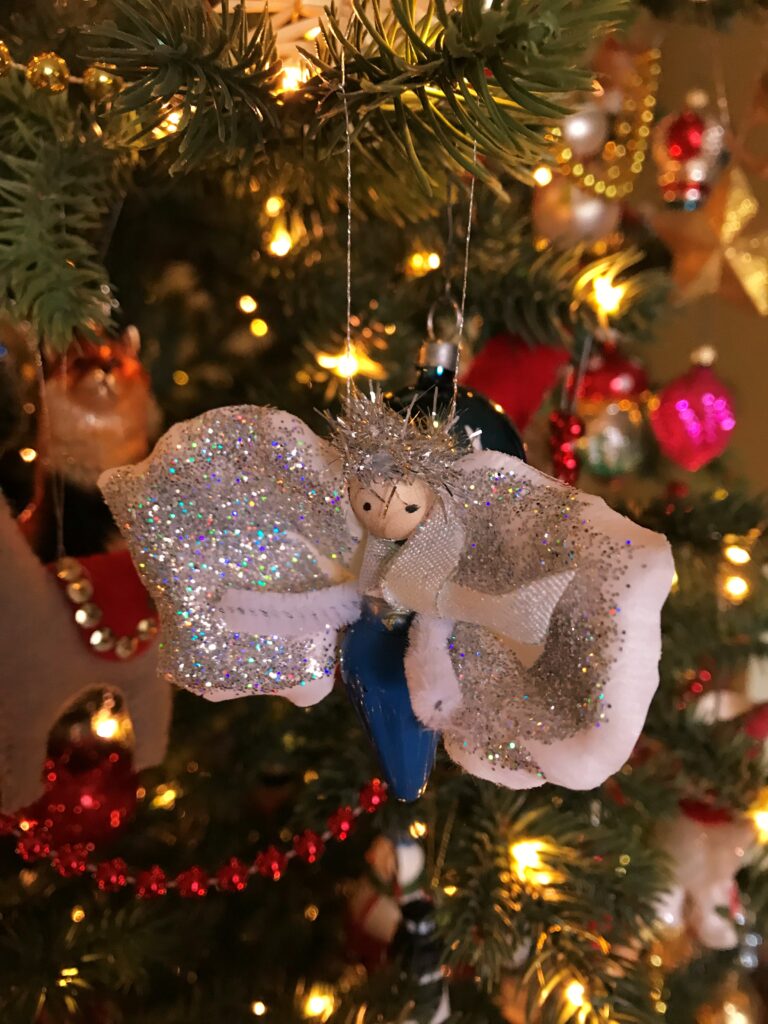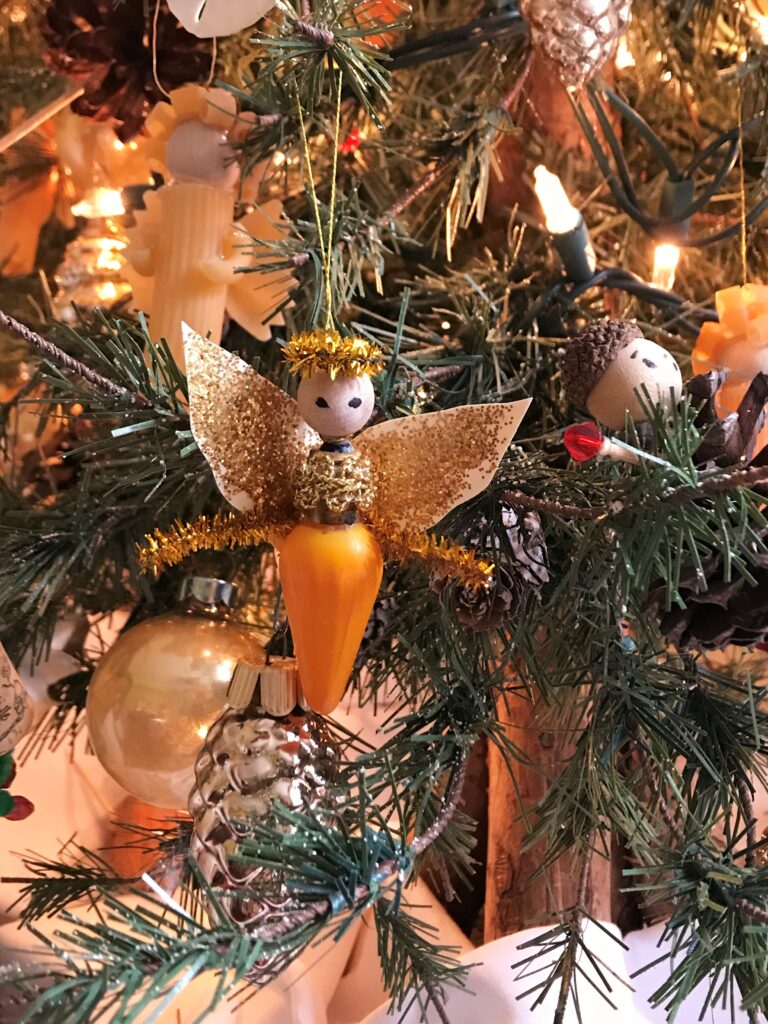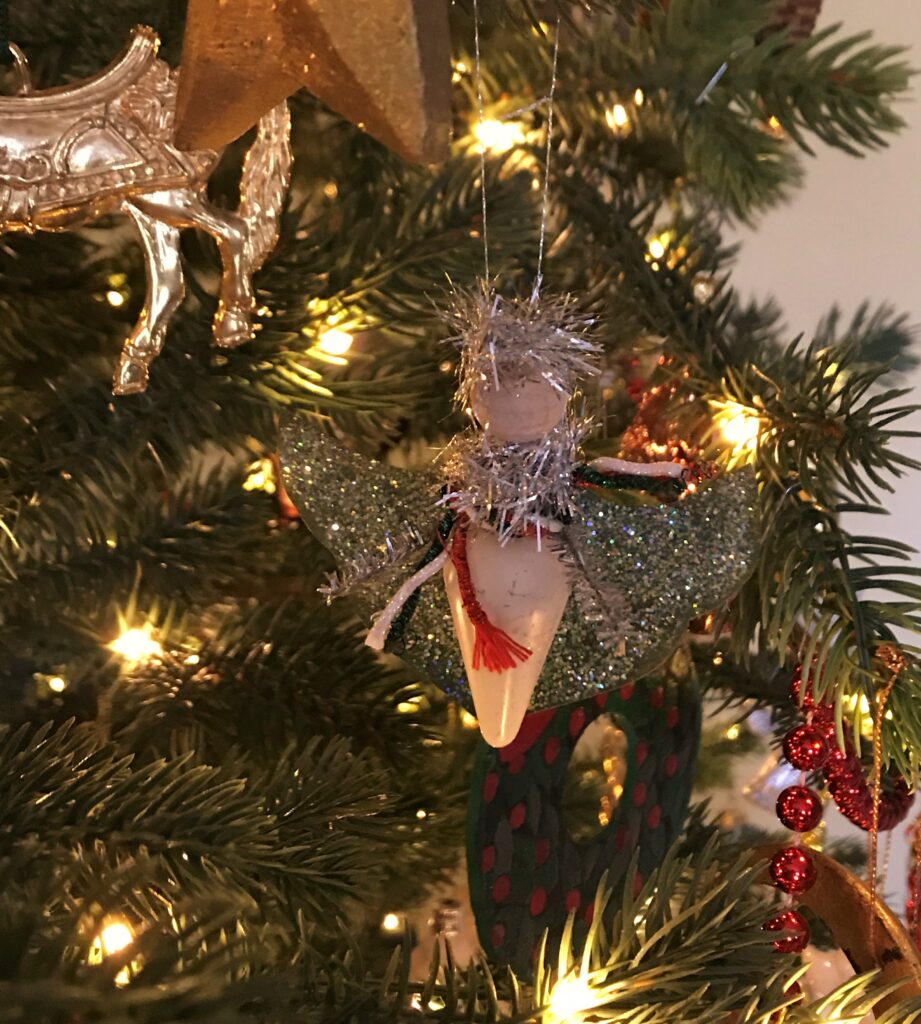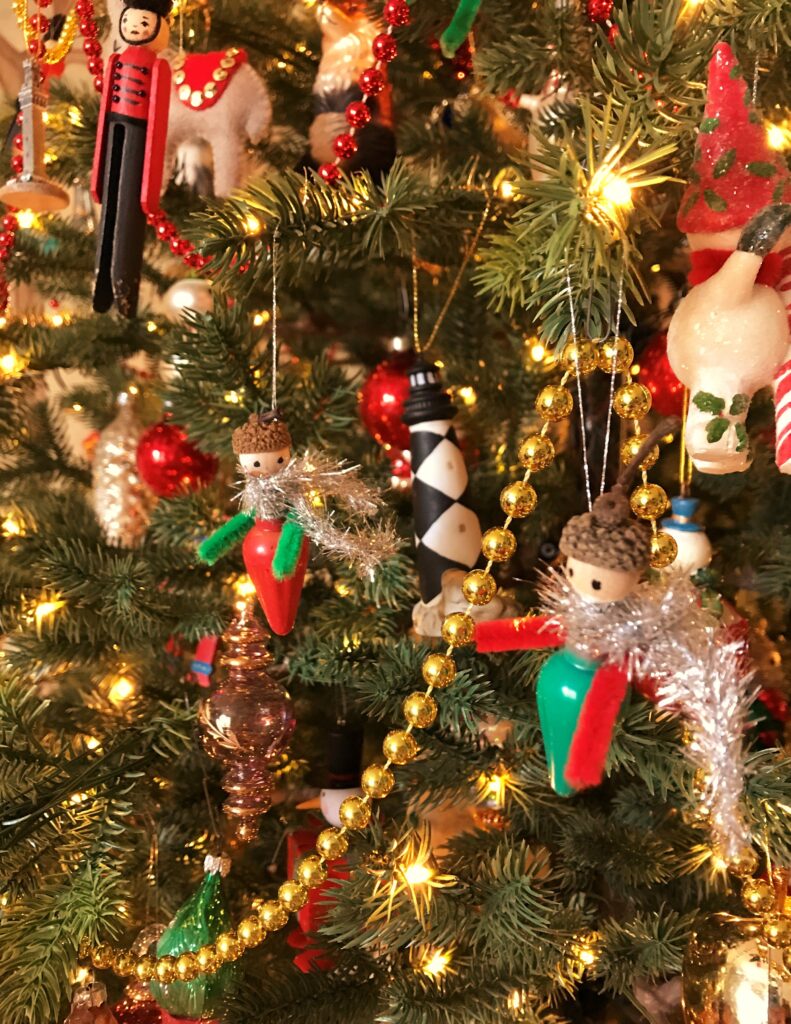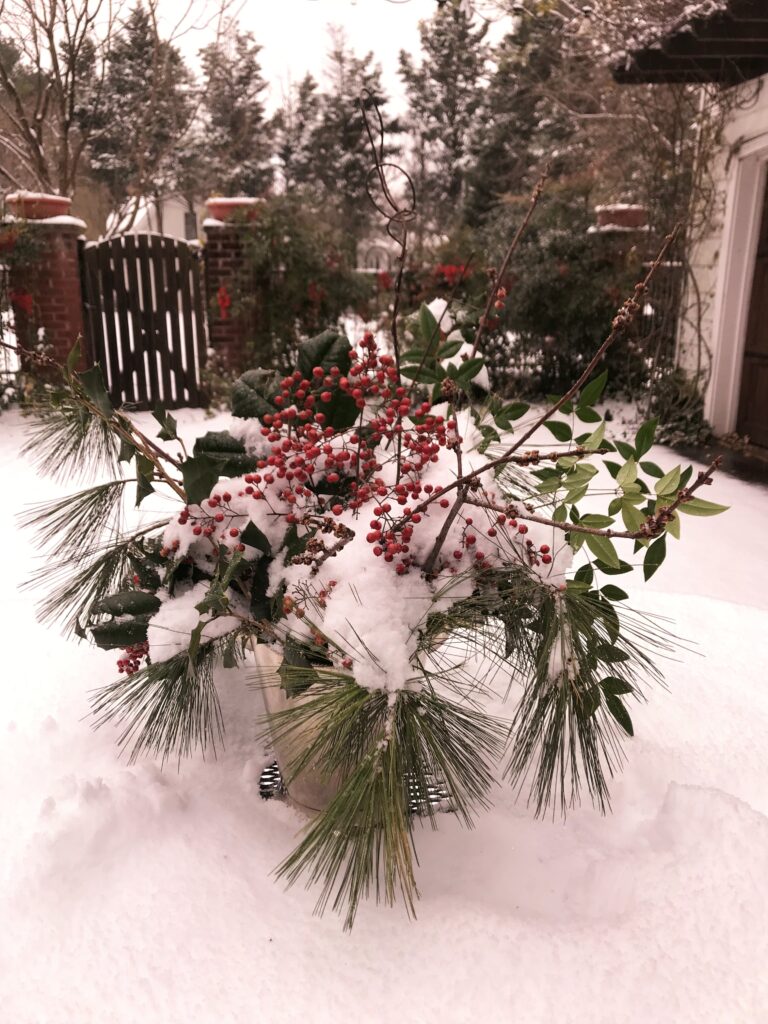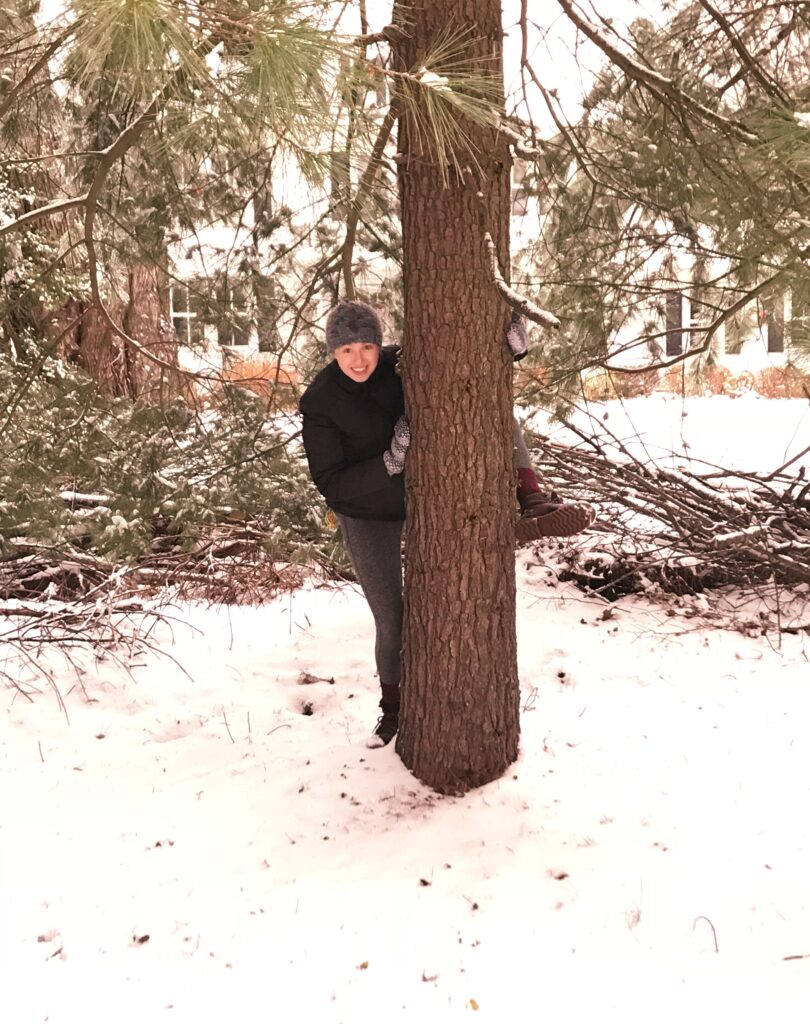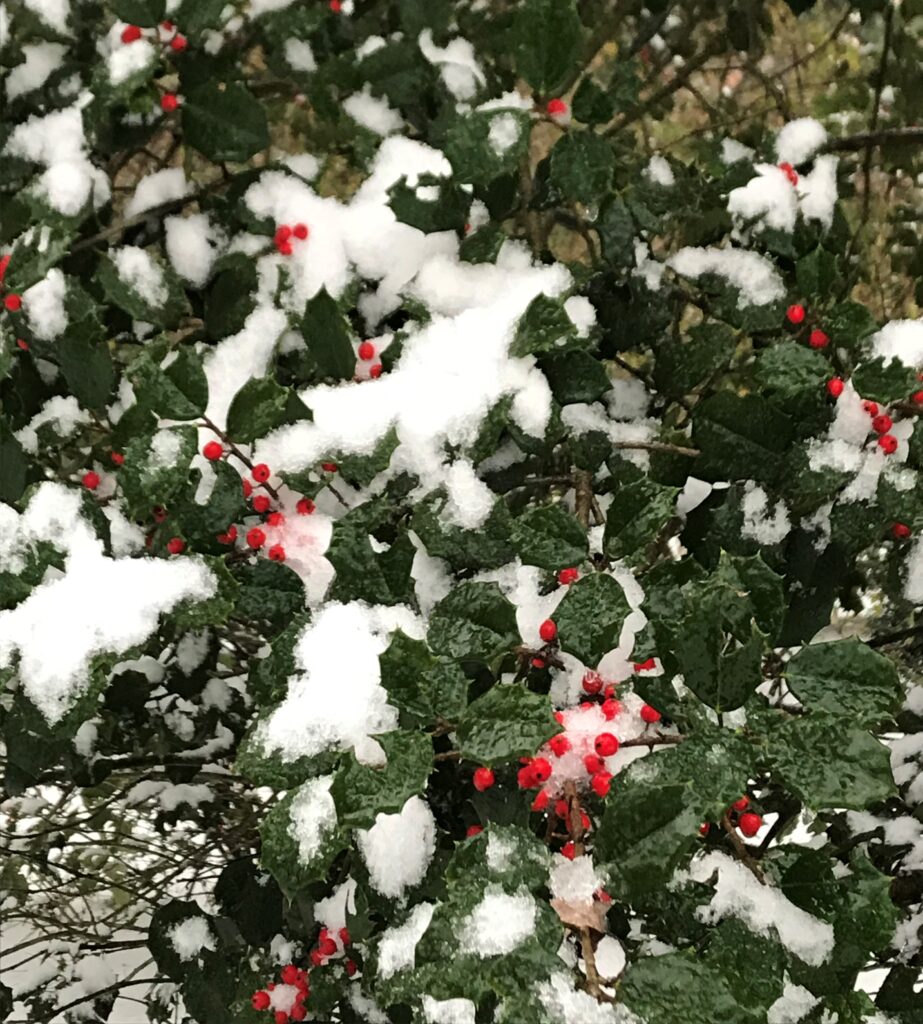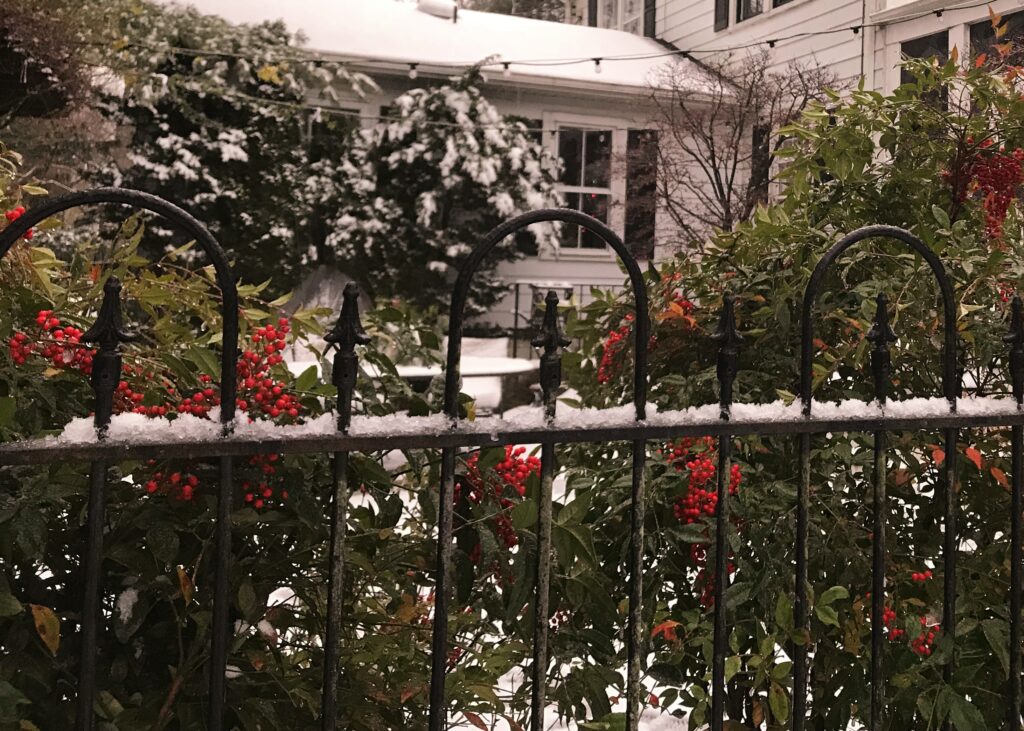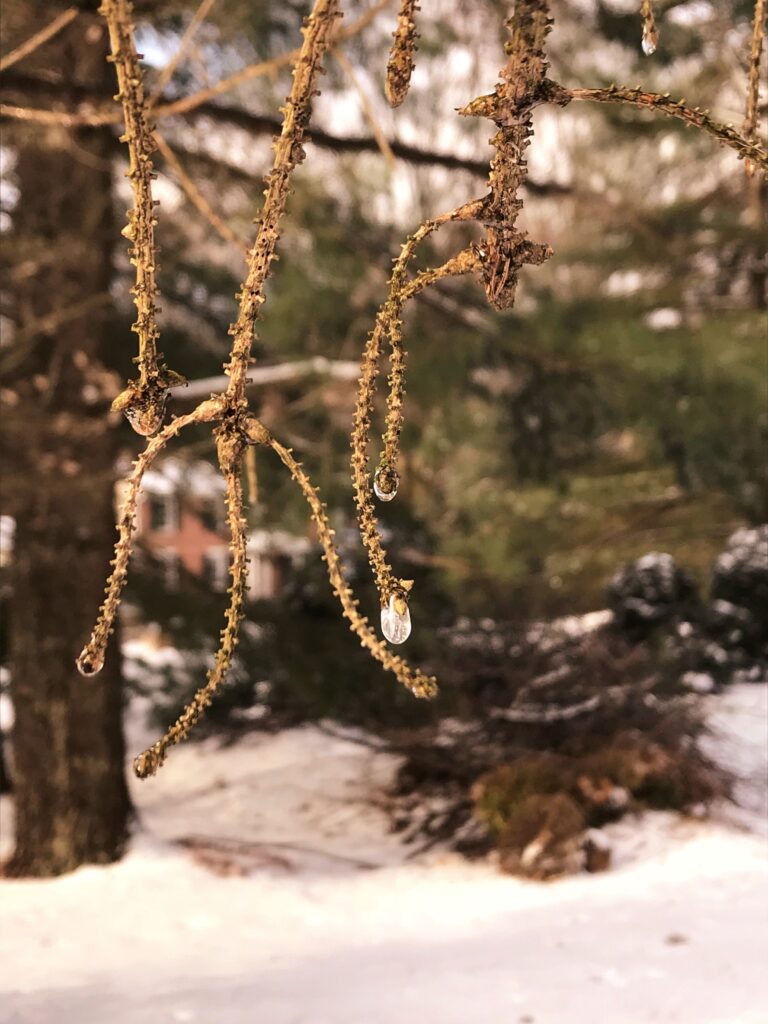Hats off to all the men who make the little people in their lives feel welcome, loved and safe, the way I felt in my dear daddy’s arms. Cheers to the good guys who have the strength and courage to be kind, nurturing, supportive, and occasionally vulnerable. May the blessings you provide be returned to you with interest. Happy Father’s Day, fathers and fatherly men!
Category Archives: Family
Looking at Brood X, Seeing Ourselves
Temperatures are climbing into the 90s here in the DC suburbs , and the cicadas are getting the message: it’s time. The pace of their emergence is accelerating. Each morning brings a bigger crowd of Brood Xers in various stages of their short above-ground lives. Yesterday, for the first time, we noticed that their characteristic buzzing could be heard in our neighborhood. At first, it might be mistaken for the roar of highway traffic a few miles away, or heavy machinery droning in the distance. Today it’s much louder. Our daughter could hear the sound over the phone as I stood on the porch talking with her. We were discussing the logistics of our attending her graduation ceremony tomorrow in Charlottesville at the University of Virginia. The last appearance of Brood X coincided with her Kindergarten orientation. Taking stock of one’s life in seventeen-year spans is a daunting exercise, one I may attempt in a future post.
As our yard fills up with more cicadas, I notice that they seem smaller and more delicate than I remember. Was it just because in our daughter’s little five-year old hands, the insects looked larger in 2004? I don’t think so, because I saw them in my full-grown hands, then and now. Is it that our our memories naturally tend toward exaggeration and hyperbole? I don’t know. I only know that I was expecting bulkier, more substantial creatures. Those I’m seeing now seem almost dainty.
Today in 2021, I’m struck by their vulnerability. Maybe I feel this way simply because I’m older. Or because the covid pandemic has kept reminding me, and all of us, for over a year, of life’s fragility. I certainly don’t remember encountering so many struggling cicadas. Repeatedly, I come across those having difficulty emerging from their shells. They appear to be stuck, not quite in and not quite out. Did the long spell of cooler-than-usual weather adversely affect their ability to molt? Others have successfully exited their exoskeletons, but they’re physically challenged in various ways. A wing is twisted, folded, malformed or too small. I found one that appeared to be miniature in all aspects except for its head and eyes. What a cutie it was, with a short body and tiny wings that looked to be edged with frills and coated in golden dust. And all around, I see cicadas that appear to be perfectly formed, yet having considerable difficulty adjusting to the new life phase. With every glance at our front porch, I see one or more flipped on its back, legs moving frantically in the air. I see some that have lost half their body to a predator, yet continue, doggedly, to crawl. Our lawn teems with nymphs and the newly molted attempting to maneuver through a hostile terrain of grass blades. I avoid walking through the yard, even though I want to check out the cicada action around our silver maples. My husband debates how best to time his mowing of the lawn. When will the massacre it entails be less pronounced?
I’m hoping that once the Brood X onslaught is in full force, there will be so many cicadas around that those facing hardship will be less evident. With temperatures expected in the high 80s over the next week or so, we should soon be entering peak emergence. Until then, though, I’ll continue to commiserate with all the struggling cicadas I see. I will attempt to rescue some, just as I occasionally move a worm from the middle of the street. It’s not that I place such an extraordinarily high value on the lives of these insects. It’s not that I deem them more important than people. Quite the opposite. It’s that, in their struggles and frailties, I see those of humankind. In their vulnerability, as well as in their persistence, I see the human condition.
This afternoon, on a very slow, hot walk with Kiko, I came across a cicada in the road. It looked healthy. I picked it up, and it buzzed vigorously in my hand. I took the perky little guy to a nearby tree, where he left my finger easily and began walking up the trunk with confidence. I saw, or imagined, a peppy spring in his step. This one would seize his hard-won day in the sun. I returned home feeling optimistic, for Brood X as well as for my human brothers and sisters.
Applause for Spring’s ensemble Cast
As May begins, spring’s high quality production design continues unabated here in Northern Virginia. The season’s talented ensemble cast rarely misses a cue, despite unpredictable working conditions such as drastic shifts in temperature, a sudden hailstorm, and recent wild, gusty winds. The players function together beautifully, keeping the audience amused and all senses invigorated.
The Appalachian redbud by our back porch brought out a striking profusion of bright fuchsia jewel-like buds, just as we’ve come to expect.
Looking a bit like tiny pink chili peppers, the flowers glow with near iridescence in the afternoon sun.
The redbud takes an inventive approach to her adornment, sprouting small bouquets of varying sizes directly from her trunk.
The little sassafras tree in our front yard was damaged last year by a heavy branch that fell from one of the silver maples. Nevertheless, she produced the annual show of frilly pale yellow flowers. Their lemony scent is subtle yet pervasive.
The camellia tucked into a corner at my mother’s house played her part with exuberance. Her limbs were gracefully bowed down by an abundance of ruffled, boldly colored blossoms.
The taller, grander daffodils in our front-yard patch took their time in blooming, letting the miniature Tête-a-têtes set the stage and enjoy their time in the limelight. When the big girls arrived, they were elegantly dressed in their Cinderella ball gowns.
The azaleas, among the season’s dependable stars, are just past peak bloom. A coral pink variety is luminous in the early morning light.
As heart-shaped leaves replace the blooms on the redbud, the spent flowers fall onto the creeping phlox below.
Creeping phlox is known and admired for its carpet-like effect. Together, the many little flowers, popping out from wiry foliage, can create a lovely cascade over a low wall in a rock garden. But each bloom in itself is a miniature marvel. Each flower has five delicate, double-lobed petals and a center resembling a tiny star or snowflake, with a ring of double markings surrounding bright yellow stamens.
And then there are the lilacs, the signature flower and fragrance of mid-spring. I love lilacs. The petite, perfect, four-petaled blooms remind me of icing flowers my daughter and I used to squeeze out of a pastry bag to decorate cupcakes. I love the way they cluster together to form larger entities. Each lilac bush is composed of communities of small flowers working together. I’ve written before about my sentimental appreciation of lilacs. They carry me back to childhood and my grandparents’ beloved old Kentucky home. They remind me of living outside Princeton when my husband and I were newly married. They’re a token of a dear friend, long gone from this world. To me, they evoke home, happiness, and the warmth of belonging. When I realized that lilac leaves were sprouting from the long gray stems of a previously unidentified shrub in the front yard of our house twenty years ago, it was another sign that we had moved to the right place. That old lilac bush has had its ups and downs, and this is a down year. With luck and a substantial pruning, it may be revitalized, as has happened before. Two years ago, we planted another lilac in the back yard, and it has flowered beautifully. A third near our porch is a later blooming variety. A house surrounded by lilacs is truly home sweet home.
Spring’s final act will soon begin. All around, the roses are budding, preparing for their big scenes. The peonies will follow shortly. And this year, a special insect guest readies itself for an historic entrance. For the past seventeen years, Brood X cicadas have been waiting underground in the wings (and for their wings), rehearsing for the literal role of a lifetime. With each warm day, their emergence draws closer. The season’s dependable cast of unique characters will take it all in stride. The show must go on.
For an earlier post on a favorite flower, see Lilacs, Lyric Hall, and June Bliss, May 1, 2012.
Spring Beauty & Easter Cheer
This year, Easter in Northern Virginia coincided with perfect spring weather. That’s a rare gift, one that was even more appreciated after a year of covid anxiety, sadness and death. Easter’s hope of the resurrection was made palpable in the beauty of new life in nature that surrounds us.
Bradford pear and cherry trees were in peak bloom, fluffy with clouds of white and pale pink.
The bright red camellia at my mother’s was bursting into flower.
The weekend’s festive, sunny warmth prompted me to bring our collection of big bunnies out for a top-down ride with Kiko. Our skeleton friend Slim, currently slumbering in the basement, would approve. Such a lovely day, he would say, needs to be seized and enjoyed.
Kiko could hardly contain his happiness. He did what he typically does when overcome with joy. He fell asleep.
Last Easter is a blur. I remember little more than a bare-bones version of online church and an unseasonable meal. We were avoiding the grocery, and we hadn’t yet got the knack of online food shopping. Easter dinner consisted of what we had on hand, which happened to be pot roast, instant mashed potatoes and canned vegetables. Deep in the freezer section of the fridge, under some forgotten Popsicles that had melted and refrozen a couple of times, I’d discovered a cylinder of frozen crescent roll dough. It was a relic from the Witch’s Finger pigs-in-a-blanket my daughter made for a Halloween party during her first year in high school. The use-by date was 2015. Why not bake up this five-year old dough? Let’s give it a try, I thought. Evidently, it wasn’t a health hazard. And while the rolls were rather flat, they were not actively bad. Still, I do not recommend them.
I don’t think I bothered with Easter decorations to accompany last year’s lack-luster meal. But cheered by this spring’s lovely weather and the hope that an end to our covid odyssey may be in sight, I dove into our Easter-themed goodies and colored eggs from years past. We have boxes and boxes of eggs, decorated in various ways. (I wrote about these in several posts from 2012. See here and here.) Unless they’re cracked, eggs boiled for a long time over low heat can last for ages.
For example, some of these reddish brown eggs, dyed by boiling with onion skins, are approaching the twenty-year mark.
Our daughter, finishing up her final semester at the University of Virginia, couldn’t join us. She would have appreciated my decorating efforts, and she’d have been happy that we had Easter dinner in the dining room rather than the kitchen. In her honor, I set the table for four, using my grandmother’s old Noritake china, painted in delicate Easter egg colors. Our daughter would also have found the meal, which included our typical Easter favorites, baked ham, scalloped potatoes, fresh asparagus and deviled eggs, far more satisfying than last year. When we spoke with her that evening, she was finishing a tricky engineering problem set and running low on food choices. But at least she wasn’t reduced to baking crescent rolls from 2015. And we should be able to see her before long at an actual in-person graduation ceremony in Charlottesville. 2020 has made us grateful for pleasures we once took for granted.
May spring’s annual renewal of life bring you hope and joy!
Spring arrives. . .and time warps
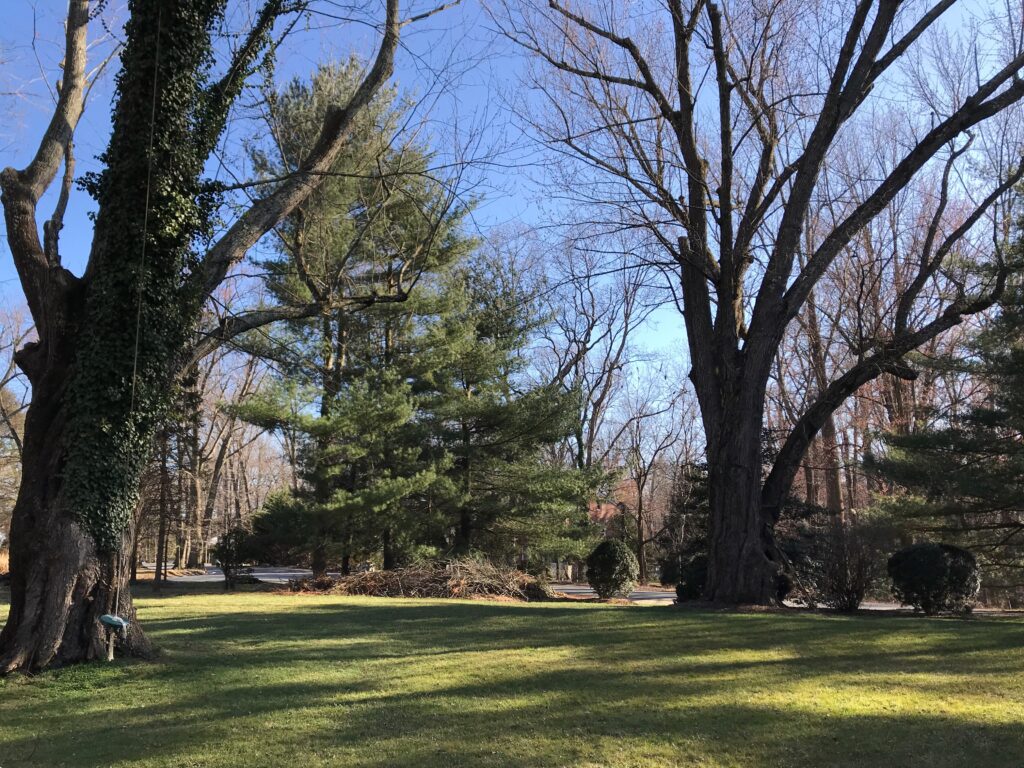
These recent March days here in Northern Virginia have been cold, windy and sunny. It looks like spring but still feels very much like winter. This is the March I remember from Easter trips to visit my grandparents in Kentucky during my childhood. How different it was from March in Atlanta, where it usually had felt like June, humid and overly warm, off and on since February. I loved the Kentucky version. I remember the white and green speckled look of the slowly awakening grass, the clumps of daffodils dancing in the bracing chill, the fast-moving clouds against a brilliant blue sky. It felt exotic, yet it also felt like home.
And that’s why it feels so right to be here in Virginia during these frosty March days. As I sit at my desk, decades later, I look out on a landscape that evokes happy times long ago, of memories glimpsed and sensed, not fully seen. Much as when I look at my daughter and see both the little girl she once was and the young woman she has become, the co-mingling of past and present is especially tangible in the bright briskness of early springtime.
Spring in Virginia is typically slow-moving, a deliberate and measured progression. Each development can be fully appreciated in its own time. The first tiny green shoots among tangled vines stand out against winter’s dominant palette of brown and gray.
The aptly named Lenten roses have been blooming, amidst their lush green foliage, since February, impervious to the cold. With their bowed heads and subtle coloring, they’re the perfect floral expression of humility.
Crocuses, another early herald of the season, have been popping up for a couple of weeks now. Their small size and delicate appearance contrasts with their hardiness and stubborn determination. They push their way up into the light, through layers of dead leaves, and through the snow if necessary.
The first of the daffodils to bloom in our yard are always the tiniest ones. These spunky miniatures test the waters for their taller, grander sisters.
On a recent morning walk with our pack, we noticed a fresh, lemony fragrance in the air. The source was the yellow bell-like flowers of spiky mahonia, a plant I know well from Atlanta. By the time my mother relocated to Virginia, what had begun as a couple of isolated plantings in our back yard near the garage had developed into a veritable and formidable mahonia hedge. This is a shrub that requires no encouragement before seizing new territory.
Kiko enjoys these cold, sun-filled March days because they offer a wide variety of cozy choices for inside napping. This week I found him in a new spot. Until recently, the carpet beneath him had been rolled up in storage in my mother’s basement. For forty years or so, its location was the dining room of our Atlanta home. It was a favorite resting place of Popi, my childhood dog. (See here and here.) During family meals in the adjacent kitchen, Popi would lie on the rug, his head facing away from us, partly because we taught him not to beg at the table, and partly because he had too much pride to do so. Because I’ve noticed that Kiko, as he ages, tends to slip on bare hardwood floors, the carpet is now in our Virginia dining room. Seeing him lying there on that old familiar rug, I see sweet Popi, as well.
The earth turns and tilts on its axis. Spring comes. The past is alive within the present. I can feel it outside in the chill of the breeze and the warmth of the sun. See it in the radiant grass around the old silver maples. Smell it in the fragrance of mahonia. And sense it in the calming presence of my sleeping dog. Is it 1971 or 2021? Somehow, it’s both.
Oh, Christmas trees, 2020
This year’s peculiar pandemic Christmas season has been lacking (and lackluster) in too many ways. But it also brought about a return to some activities that I thought might have been largely confined to the past. In an earlier post, I wrote about how my daughter and I, home bound together in the family pod, were inspired to make a new type of Christmas ornament for the first time in years. It wouldn’t be right to consign our Band of Bulbs to a table or shelf. They needed an appropriate home for the holiday, as did our creations from years gone by. They needed a Christmas tree. No. Not just one. If all were to be accommodated, several trees were required. My daughter was adamant about this.
Last year I didn’t find the time or energy to put up the tabletop tree in our playroom. I’ve been known to grumble that this slightly bedraggled tree’s ideal location is a crowded corner of our messy basement. But this tree is particularly dear to my daughter’s heart. It’s the locus for most of the ornaments of her childhood, many of which we made together, such as bread-dough clay snowflakes, stars and candy canes, awkward wrapping paper angels, and little drums of felt and spools. It’s the place for decorations that she bought, with her own money, each December at her elementary school’s holiday book fair. Its base provides the perfect spot for a gathering of stuffed animals consigned to the attic for the rest of the year. It sets the room warmly aglow with its multicolored lights. Once fully decorated, I have to admit that it’s a wonderfully cheery sight. And when positioned in a corner just so, its pronounced slant is barely noticeable.
We hadn’t put up a tree in my mother’s house next door since her relocation to Virginia three years ago. Again, with time on her hands and a general absence of social activities, my daughter took the lead. Nana’s house, she insisted, must have a tree. Wasn’t there one lying forlorn, in pieces, in the basement? It’s been eleven years, when we spent Christmas in Atlanta, since she’d seen the ornaments my parents and I had collected and crafted over the years, the ones I remember so well from my childhood. Even the hand-written, idiosyncratic labels on the boxes bring me smiles and vivid recollections: Handmade Fancy Balls. Santa Makings. Big Red Balls. Angels & Rudolfs. So it was a special pleasure to unpack these vintage treasures again with my daughter, as Mama and I recounted the stories of Christmases past that they prompted.
Even some of the smallest of trees were decked out in lights and baubles this year at my mother’s.
Back at our house, the three skinny alpine trees in the dining room serve as the setting for most of our cork and pinecone people, pasta angels, Cape Cod scallop shell angels, and now our Bulb Buddies.
The big tree in our living room was the last to go up. We decorated it over a period of nearly a week. No ornament, even those that were damaged or funny-looking, was left out this season. Each one found a place on the tree. I bought no new decorations at all this year. None, indeed, were needed.
The boxes of holiday trappings stored at my mother’s house and mine would likely be considered mere clutter by many. But to me, to my daughter, my mother, and to some degree, even to my husband, these battered containers are filled not with stuff, but with happy memories. They spark joy. And joy has been elusive and fleeting throughout 2020. Let’s seize it, and savor it, where, when, and while we’re able.
I wrote about some of the best-loved ornaments on the family Christmas tree of my childhood in several posts from 2015. See:
Childhood Treasures on the Christmas Tree
With Time at Home, a return to Christmas crafting
During my daughter’s younger years, she and I continued the tradition of making Christmas ornaments that my mother and I had begun in my childhood. (See Working Like Elves, and Next-Generation Elves, both from December 2011.) It’s been quite a while since D and I have created a new ornament, but with the unusual circumstances of this holiday season, the conditions were conducive for at-home crafting again.
In a long-forgotten handmade box among the Christmas decorations at my mother’s house, we found brightly colored vintage bulbs and various other odds and ends. Amidst the jumble were toothpick and pipe-cleaner arms from two of our past creations, the pinecone and cork people.
My daughter and I had the same idea at once: Christmas bulb beings. Equipped with a newly uncovered box of miscellaneous ornament makings from Mama’s basement, we spent several happy hours, much as in Yuletide days of yore, working together at the playroom table. (We spent additional time attempting to remove Superglue from our fingers.)
Our new group of Christmas characters includes several with wooden beads for heads, like these red and green twins in acorn caps and sparkly pipe-cleaner scarves. . .
. . .and this royal-looking girl with gold accessories.
There is one apple-headed figure. My daughter enjoys the surrealist touch.
A pom-pom headed boy in a straw hat carries two miniature Christmas ornaments.
A cowboy in a black hat holds a lasso. There’s room in our bulb bunch for all types.
We made a few angels with wings of silk flower petals or glitter-covered card stock.
The bulb beings appear to be settling in well with their fellow ornaments. They owe their existence to the pandemic. Another Covid silver lining. The biggest, for me, of course, is having our daughter here for an extended stay. May you and your family find special blessings during this most peculiar holiday season.
Scenes from a Covid Winter Snow
The first snow of the season arrived yesterday. The flakes started out fat and fluffy, blanketing everything quickly in white. Even during a global health emergency, a mid-December snow is beautiful. Christmas-card worthy images of red, white and green abounded: cardinals on frosted evergreen branches, nandina and holly topped with snow.
In an ordinary year, our daughter might not have been home yet for winter break from the University of Virginia. But because of the pandemic, she’s been here since before Thanksgiving. As her social life has been drastically curtailed, a walk in the snowy neighborhood with her mother held far greater appeal than in years past. Her presence during this time has indeed been, for me, the best of Covid silver linings.
After a few hours, the snow turned to sleet, then to freezing rain, as it so often does here in Northern Virginia. Branches, foliage and berries were heavily coated in a layer of ice.
This morning, both porch doors and every outside gate were frozen shut. It was a perilous endeavor to walk from our house to my mother’s next door. Yet the sun shone brightly on each treacherous surface. Ice-glazed red berries and deep green leaves gleamed even merrier in the light.
But the perfect image of our Covid winter may be this: clinging to the tips of spiky brown branches of a dying evergreen, the oblong beads of ice, looking for all the world like frozen teardrops.
December 16, 2020 was our deadliest day of the pandemic yet, with 3,656 lives lost to Covid-19 in the US. The total number of American deaths from the virus approaches 310,000.
Dog Days, This Summer
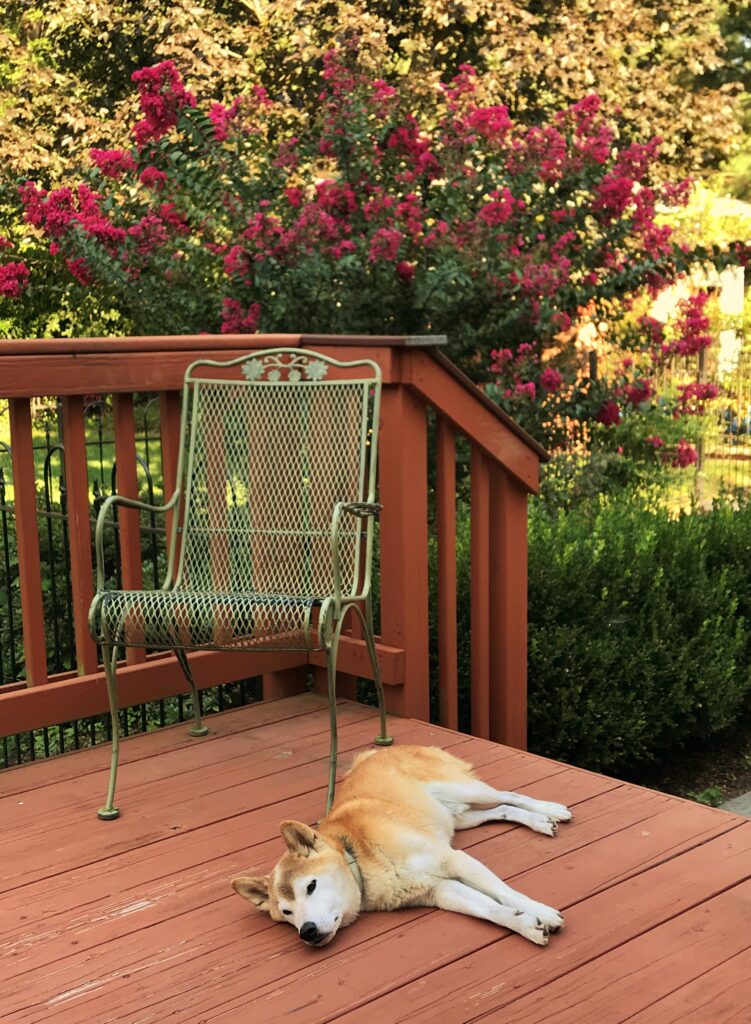
Who had a good summer? Who had a good summer? This boy! He’s such a good boy, isn’t he? Yes, he’s a good boy.
Imagine the above spoken in “puppy talk,” that silly-sounding person-to-dog gibberish. The goofy cadences, the redundancy of needless repetition. I fall into it sometimes, and Kiko either turns away in embarrassment, or looks at me with an even greater degree of condescension than usual.
But if my dog were able to answer the question, he’d probably agree that he did, in fact, have a good summer. A very pleasant summer. If anyone’s life was improved by the unusual circumstances of the pandemic, it’s likely the beloved companion dogs whose humans’ activities have been so drastically curtailed.
It was Kiko’s good fortune that Covid numbers spiked here in Virginia during the final week of July, so that Massachusetts wouldn’t let us in without a negative test result or a two-week quarantine period. Until that point, we’d been planning on our annual Cape Cod vacation, even though much of what we enjoyed most about it would no longer be possible. Instead, at our daughter’s suggestion, we bought a ten-foot inflatable pool, set it up on our back patio and reminded ourselves of the long and painful drive we were avoiding. With sunshine and a big pitcher of margaritas, we almost felt like we were on vacation.
Of course, our dog doesn’t fully appreciate the unexpected blessings that came his way this summer. He doesn’t realize how narrowly he avoided the usual period of solitary confinement at the animal hospital. Instead of facing long hours in a cell and a few circumscribed outings in a featureless enclosed area, he remained free to pursue his favorite activities, without interruption, on his home turf. Kiko maintained his role as canine king of the castle grounds, languidly roaming the outdoor spaces between our house and my mother’s, napping in the sun, napping in the shade. There were so many delightful choices: the baking heat of the deck, the coziness of dusty mulch beds, the cool flagstone beneath the hydrangeas, or the sofa on the screened porch. Occasionally he’d jump up to chase a chipmunk or squirrel. More often, though, the little furry ones, like the mice in an old Tom & Jerry cartoon, tiptoed behind and around him as he snoozed. Sometimes he’d disappear on very hot humid afternoons. I’d find him around dinner time in a deep, coma-like sleep in his bed in the chill of my mother’s family room. Often Mama wouldn’t even realize he was there. Evenings were his to spend watching the fox and deer as they made their neighborhood rounds. On the rare occasions when Kiko sought company, one of his pack members was always around. Always.
He’s clearly noticed that his people are ever-present. On a recent afternoon, Kiko was curled up on my bed. I opened my closet door and took out a casual (a very casual) dress on a hanger. He looked at me with a sudden, heightened interest. He stretched, shook vigorously and leapt onto the floor. Was I, perhaps, going out? Maybe in the car? Whoo hooo! Count him in! One of the things we love most about dogs is that they have no fashion sense; they don’t care how, or even if, their humans dress. My husband gently suggested, the other day, that I consider wearing something a little less lived in than the extra-comfy dog-walking gear that has become my standard, all-purpose wardrobe. It’s been about six months since I’ve dressed up. I’ve even realized, on occasion, that I’ve worn some distressed item of clothing inside out all day long. No one has noticed. Certainly not Kiko. But he’s evidently observed that a change of clothes involving a search through a mound on a chair has no impact on him. But the now rare opening of the closet door followed by the emergence of a hanging garment–that offers a hint of promise. One of the drawbacks of such constant human presence is that it offers far fewer opportunities for car rides.
Now that summer has officially ended and school has begun, the pandemic has granted Kiko yet another gift. Because classes are being conducted exclusively online, there are no buses to roar menacingly past our windows. This time last year I wrote about my dog quaking with fear in the early mornings when the bright flashing lights atop the school buses suggested the approach of a terrible storm. See here. Unlike the rest of us, he has one fewer trauma to grapple with. Kiko greeted every dawn last fall as though it might be the end of the world. Now it’s just us humans who wonder if that’s the case.
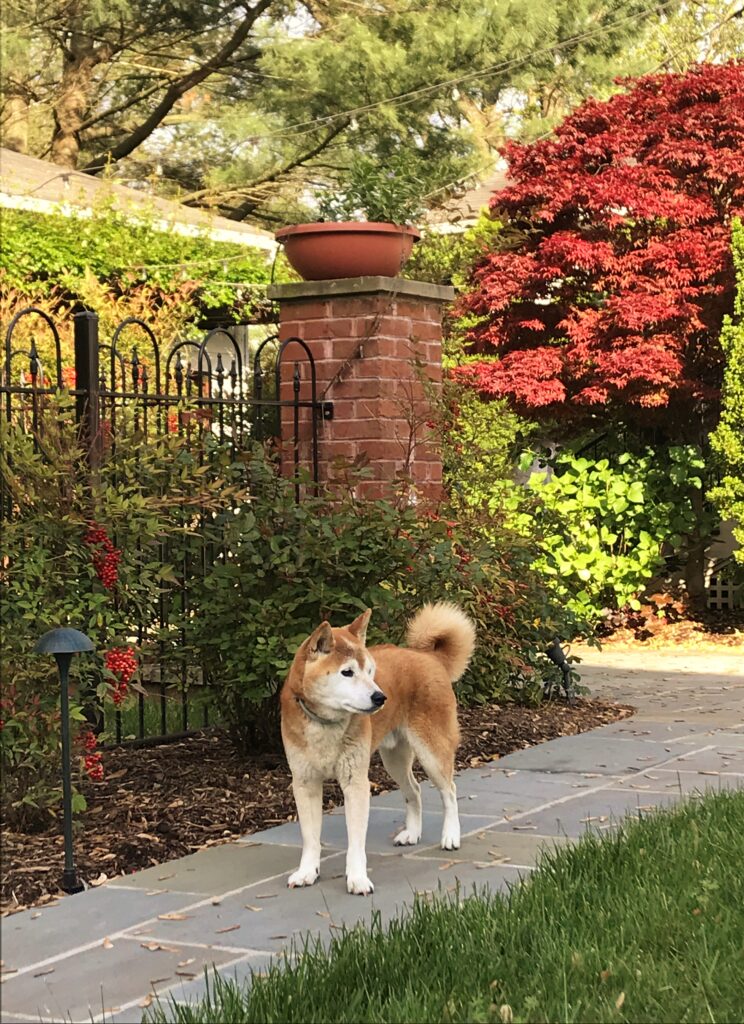

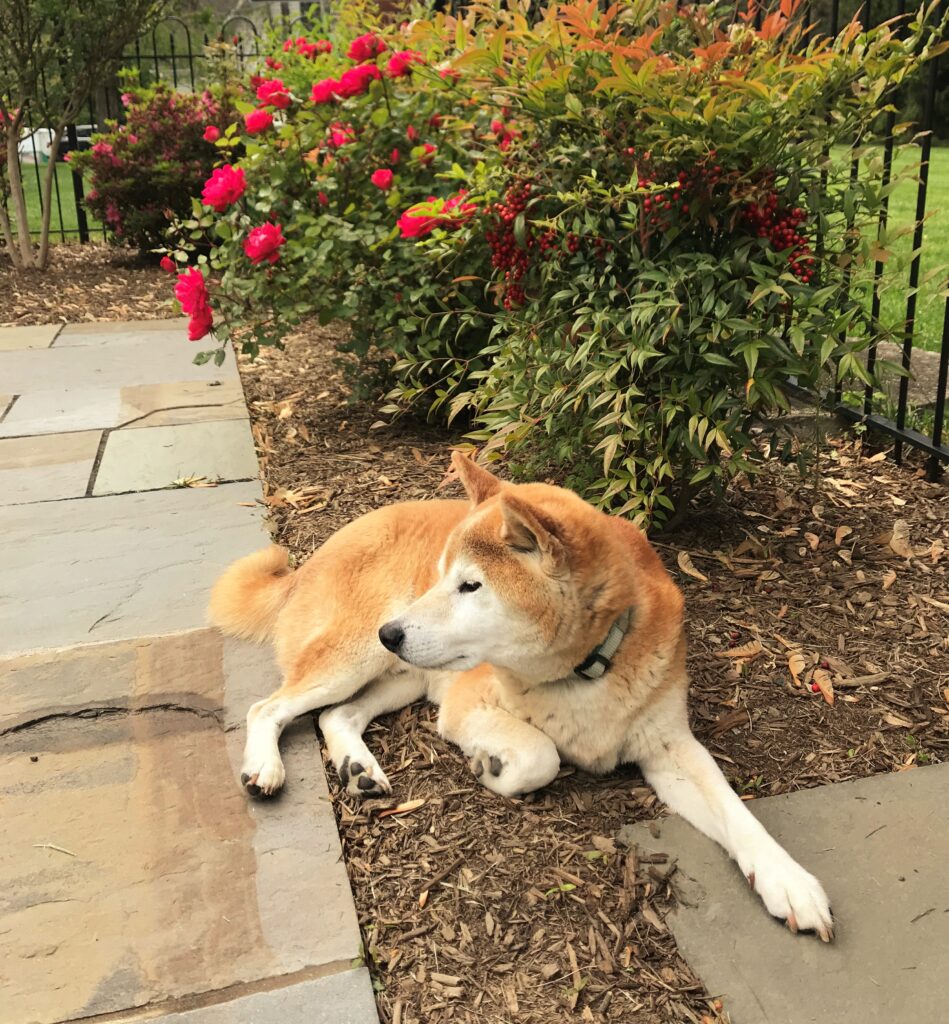
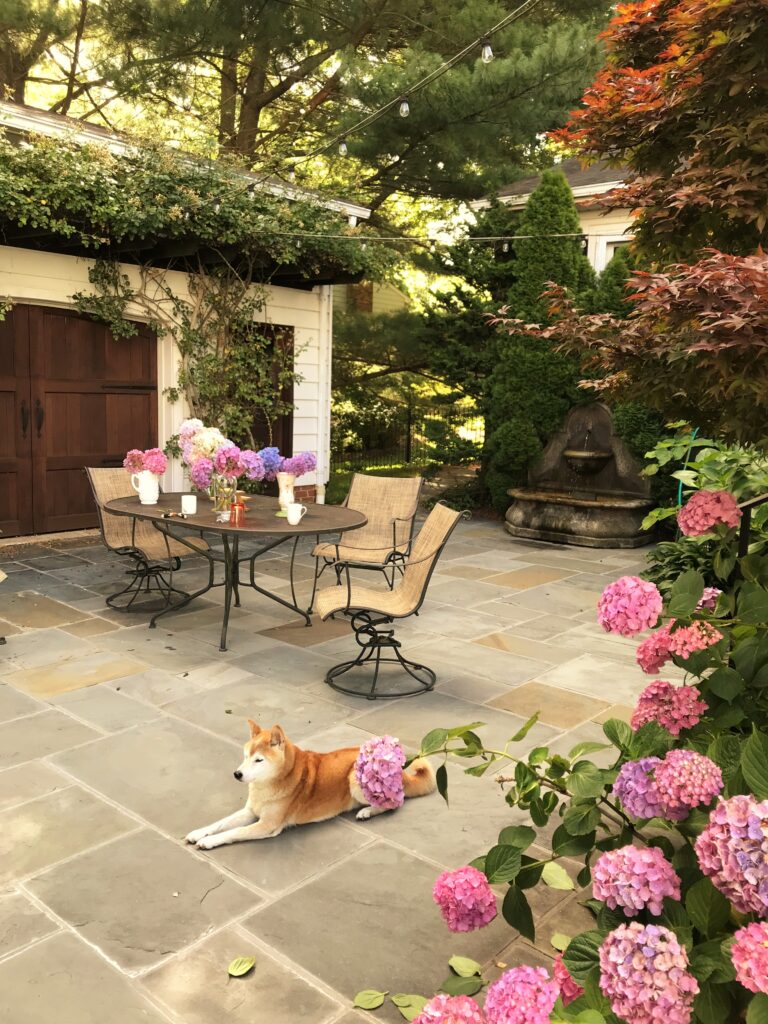
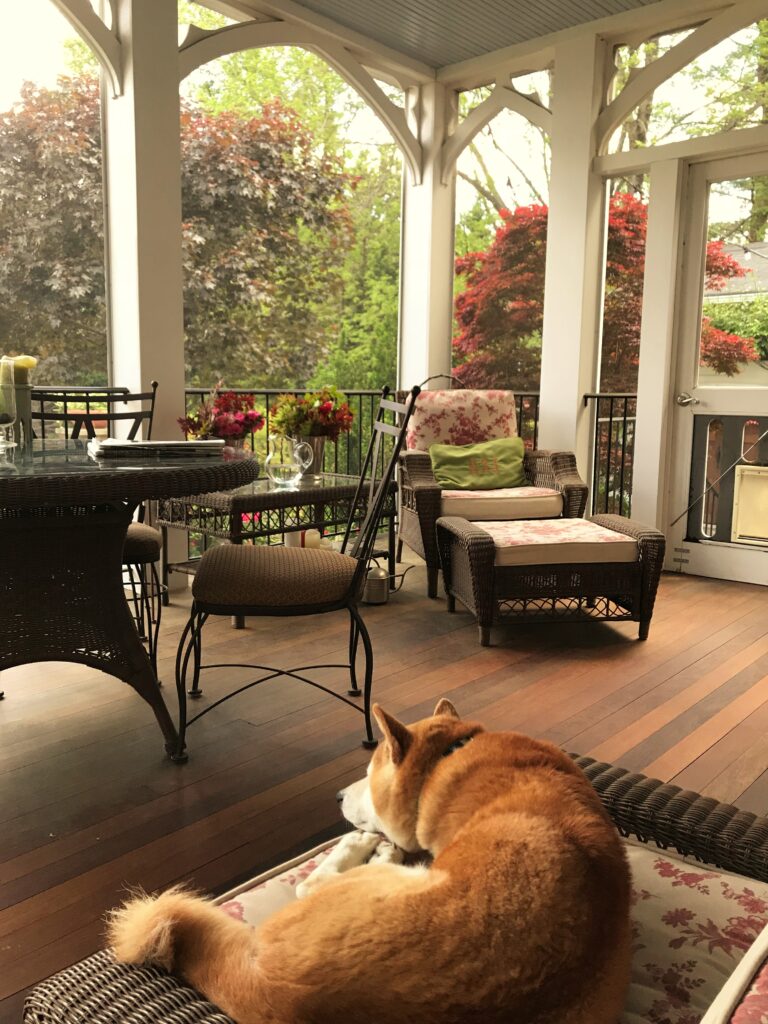
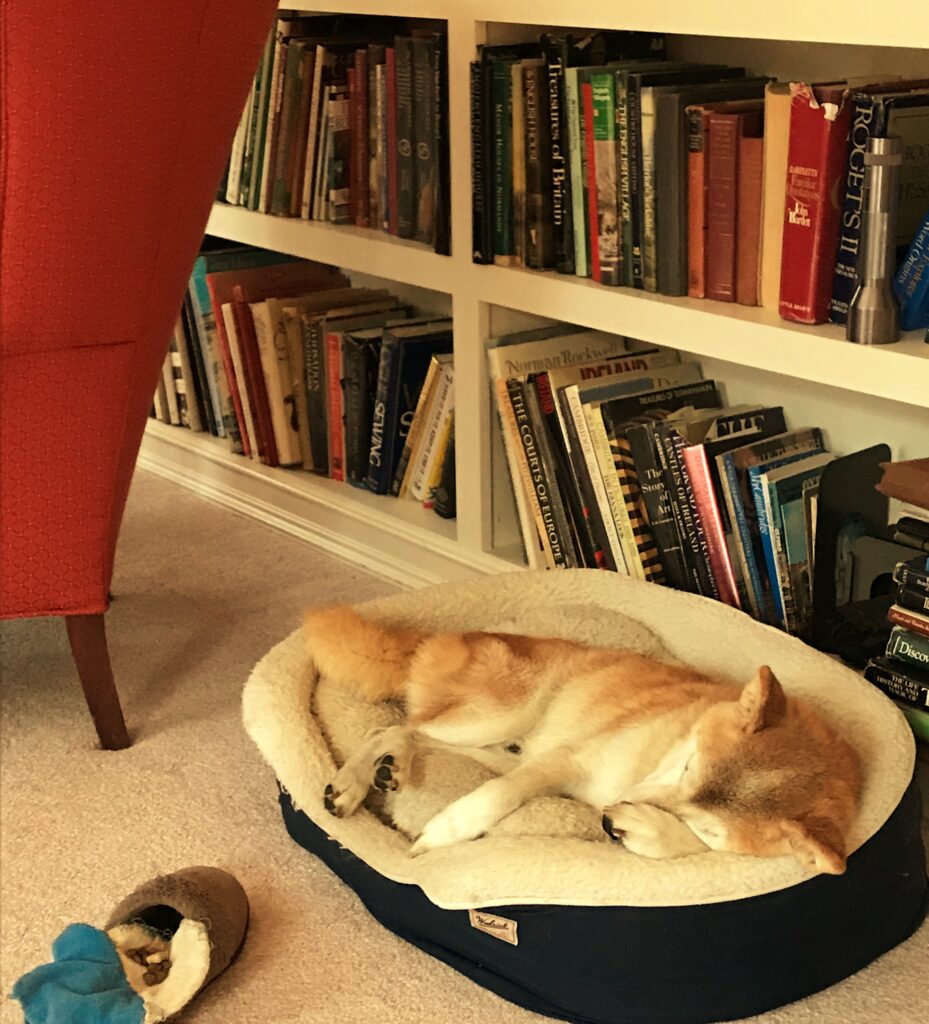
Back to School, at Home
School began again here in Northern Virginia this week. It’s the strangest “Back to School” ever, with all classes taught remotely. Last year I wrote about the poignancy of those “First Day” pictures that flood social media sites every fall. (See here.) The current photos have a different sort of heart-wrenching quality about them. Gone are the signs of jittery anxiety about bus-riding, lunch in the cafeteria, fitting in socially, and spending hours away from home. Largely vanished, too, is that hopeful excitement that comes with a new adventure and the opportunity for a fresh start. This school year drags with it a melancholy unease, heavy with the loss of what should have been. There will be no fun school-sponsored group events, no band, orchestra or choral concerts, no in-person drama productions, at least for months, and no fall sports. But without a doubt, there will be the ongoing annoyances of Internet and WiFi outages, tech complications, and occasional widespread system failures. Frequent parental intervention will be required, a serious problem for working moms and dads. There is the issue of space, especially in smaller households, the difficulty arising from an entire family working and schooling at home. And then, when things are progressing as intended, there is the dull sameness of hours sitting in front of a screen staring at a Zoom gallery.
For college kids, the situation isn’t much different. Our daughter’s spring break last March slid into online classes at home. After a summer that involved unprecedented amounts of time with her family and too little with friends, she began her fourth year again at home. The University of Virginia encouraged students not to return to grounds until after Labor Day. Now she’s once again in Charlottesville, in the apartment she shares with three friends. It’s not the final college year they had anticipated, that’s for sure.
This new school year feels anything but new. It’s already tired, burdened by the same frustrations we experienced in spring and summer. Is it really September? Does it matter? The months have ticked by with alarming speed, yet each day is much like any other.
In the alternative reality of our Covid world, time has become slippery, looping and uncertain. I’m reminded of the red plastic cassette recorder I enjoyed as kid. My closest friends and I used it to tape variety shows modeled on The Carol Burnette Show and soap opera parodies (Another World in Hay City). Our talent for comedy, if little appreciated by a wider audience, kept us in stitches. I can see my finger on the rewind button, hear the whir of fast forward, the loud sudden clunk of the stop. I recall the baffling emptiness when an expected song or bit of dialogue had somehow disappeared. Sometimes we hit the wrong button and accidentally recorded over a prized skit or hilarious duet. Since March, 2020 has moved with a similarly lurching, erratic randomness. Some aspects of life that we cherish most have simply been erased. Many people are grieving lost loved ones. As I write, nearly 192,000 Americans have died from the novel coronavirus. Sometimes it feels as though a cloud of semi-mourning shadows the entire country. We plod along, uncertainly. And we keep ending up where we started, in a place we never wanted to be.
Happy “Back to School”? Not particularly. Not this year.
